Why you can trust Tom's Hardware
As with the Sapphire RX 6600 XT Pulse review, our test hardware remains unchanged other than using the public 21.8.1 AMD drivers. We have the same 13 games, tested at 1080p, 1440p, and 4K using 'ultra' settings. Technically, we use the ultra preset on most of the games, but a few (like Final Fantasy XIV, Horizon Zero Dawn, Red Dead Redemption 2, and Shadow of the Tomb Raider) use a different name or don't have presets. The important bit is that we use the same settings in each game, then we test each resolution three times, discard the first result, and take the higher of the second two runs (after checking for anomalous results). Here are the galleries of all three resolutions, with comments on the results below.
1080p Gaming Performance
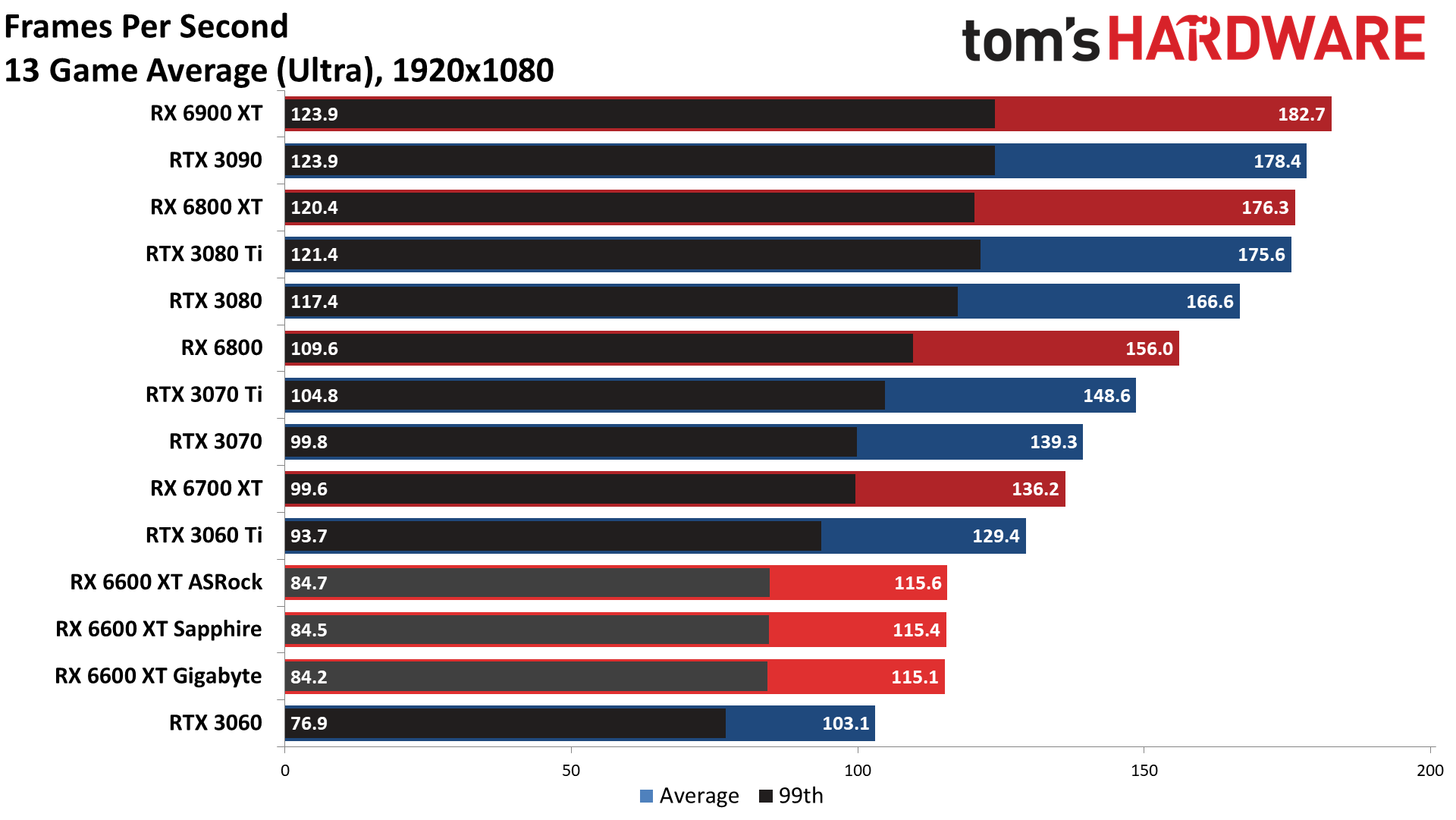
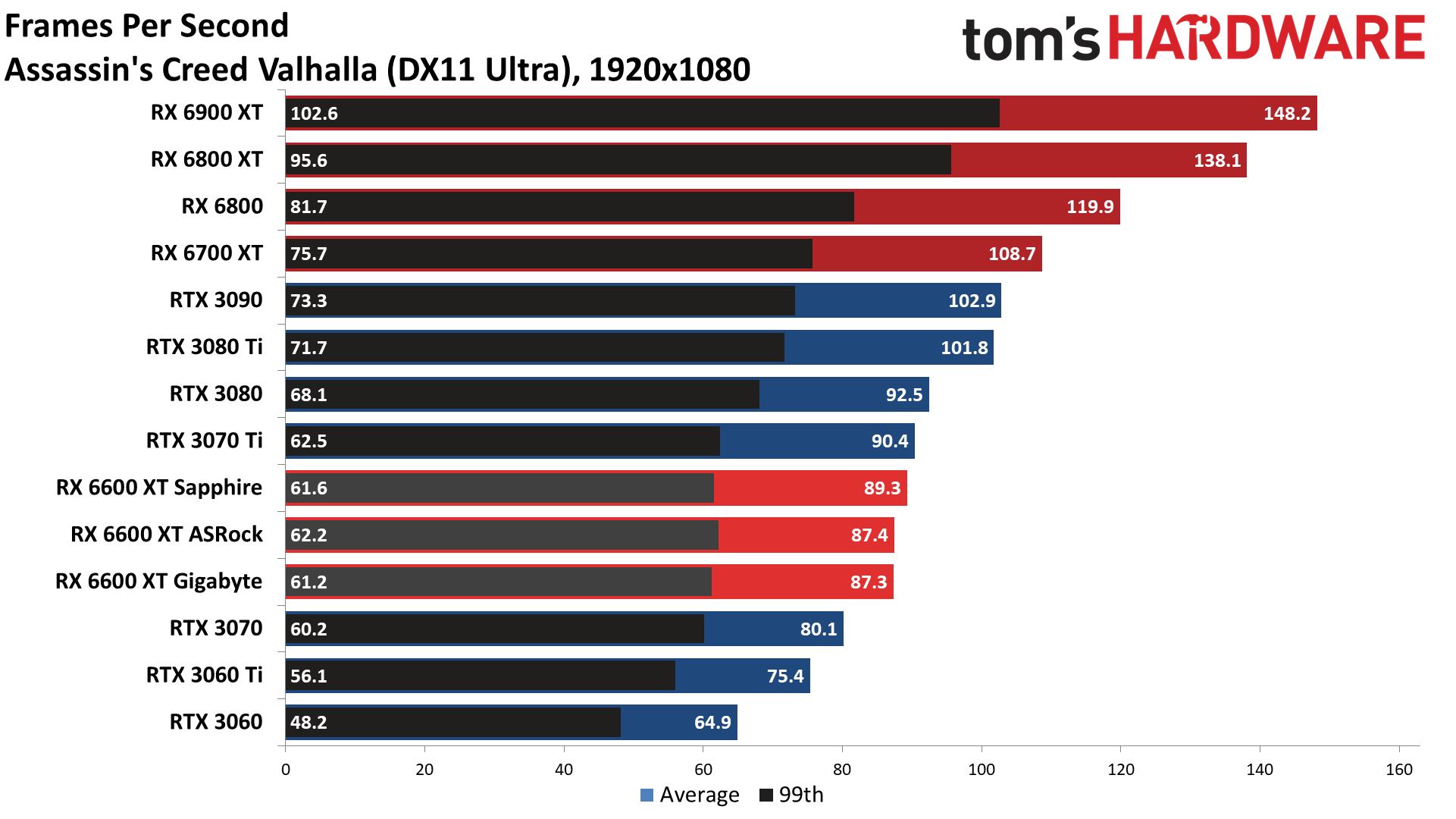
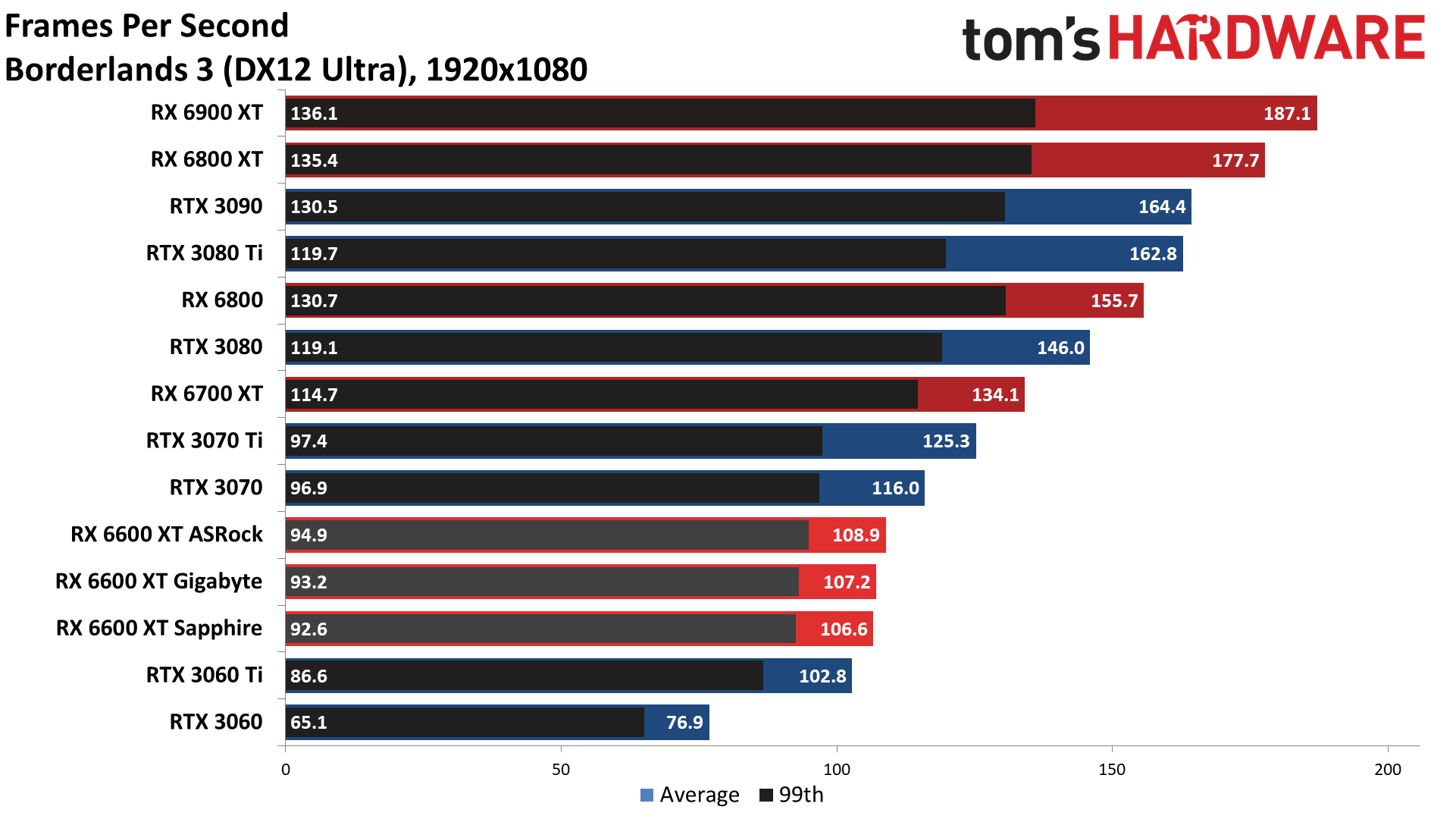
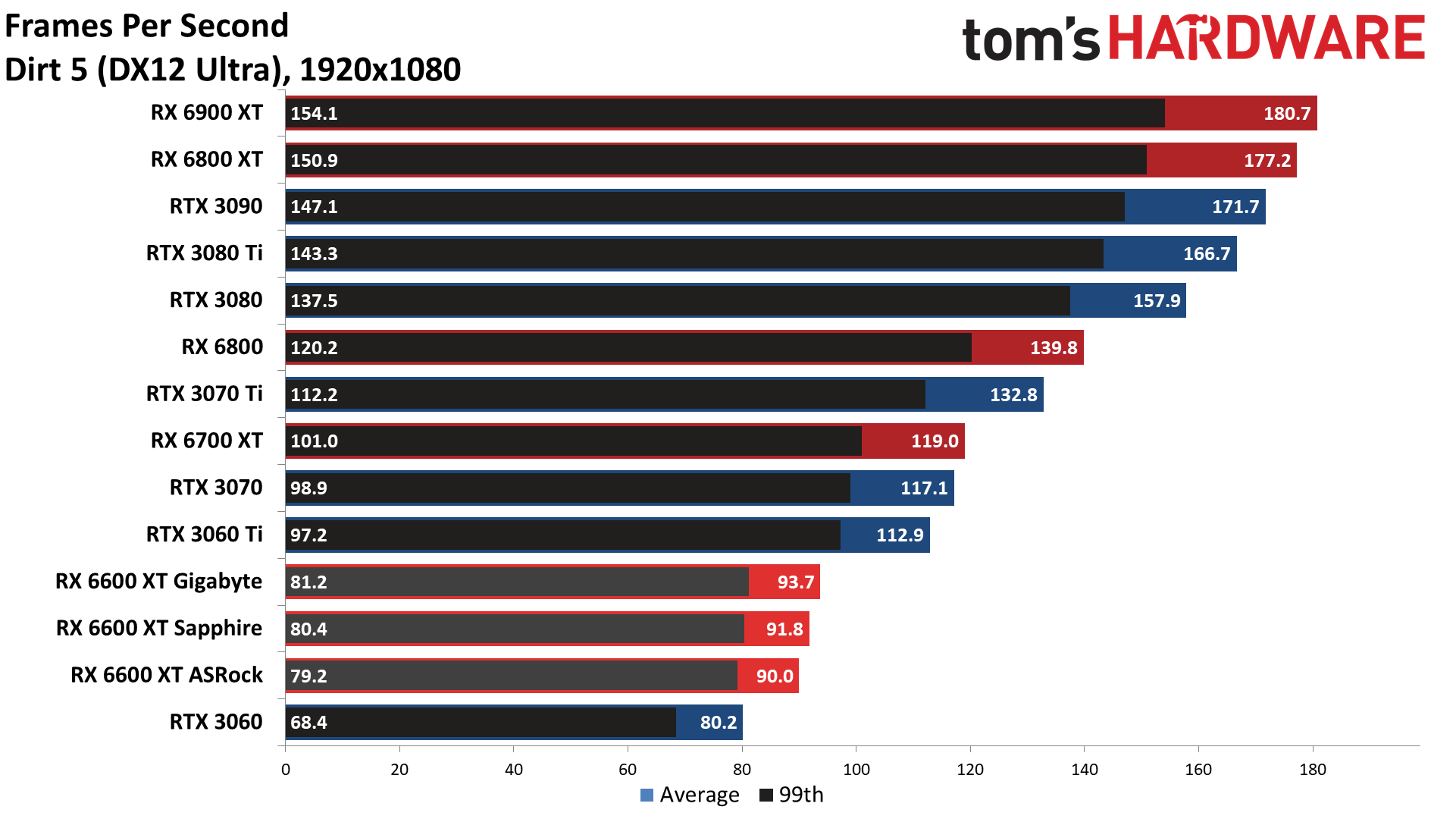
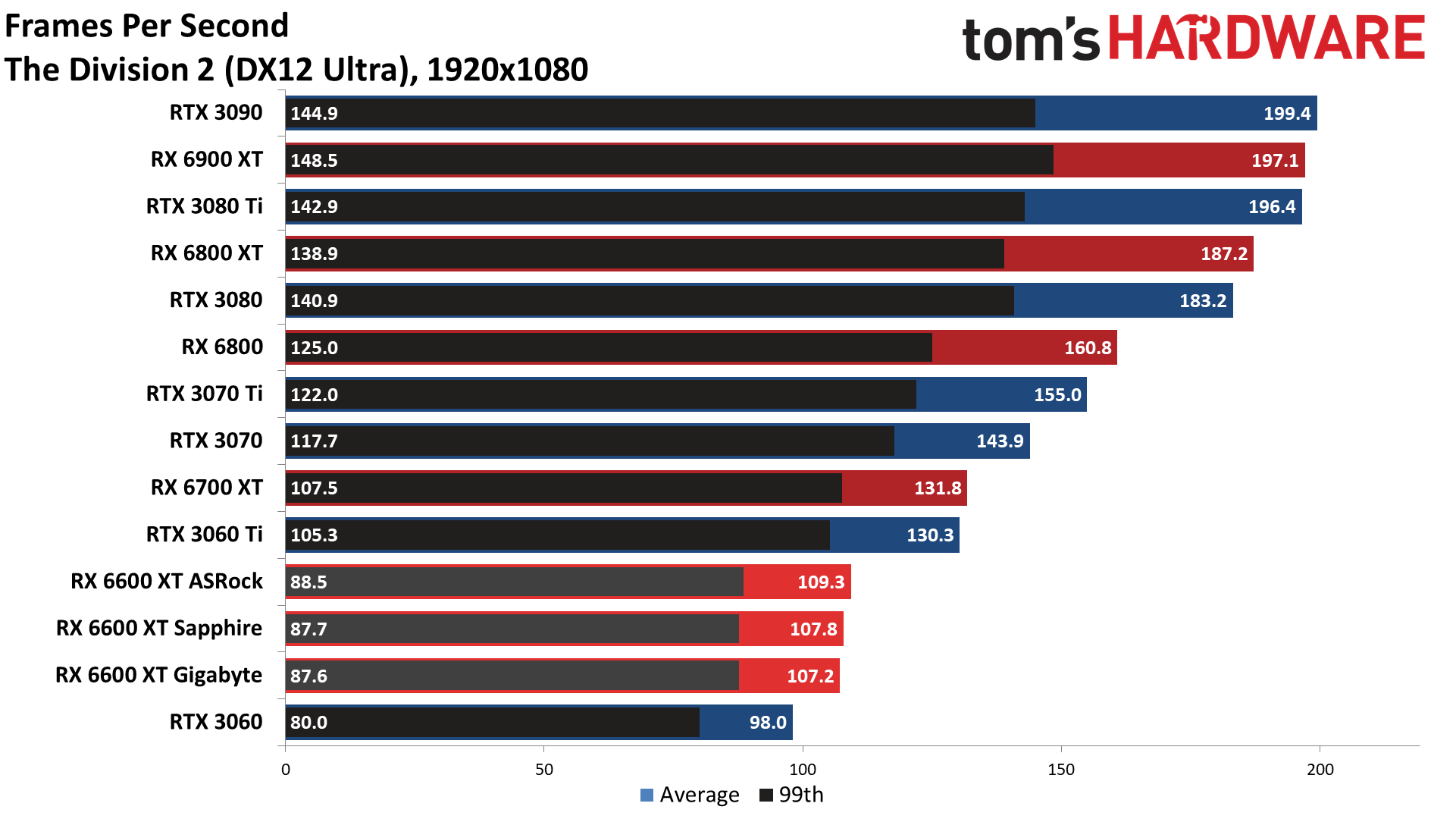
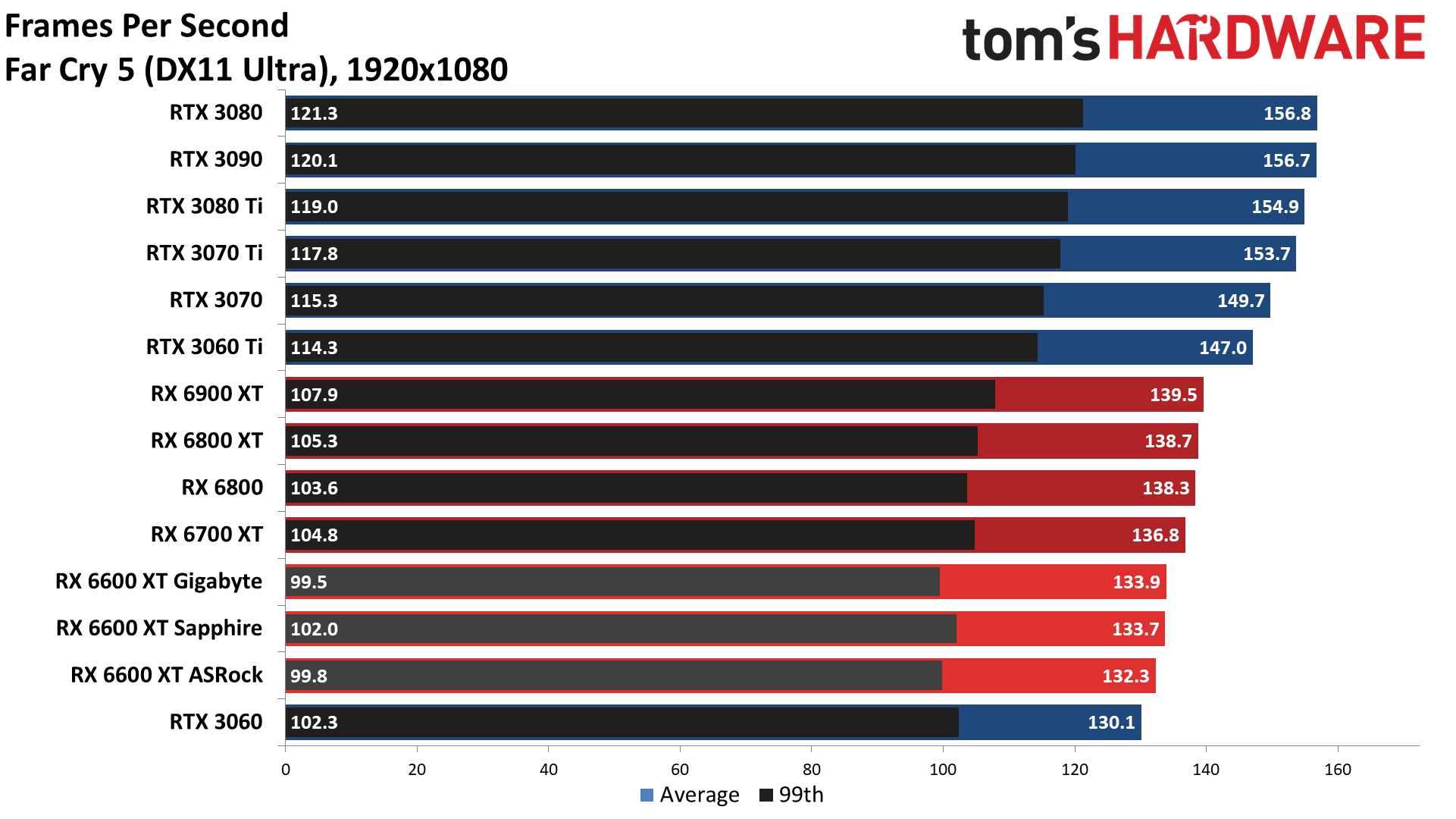
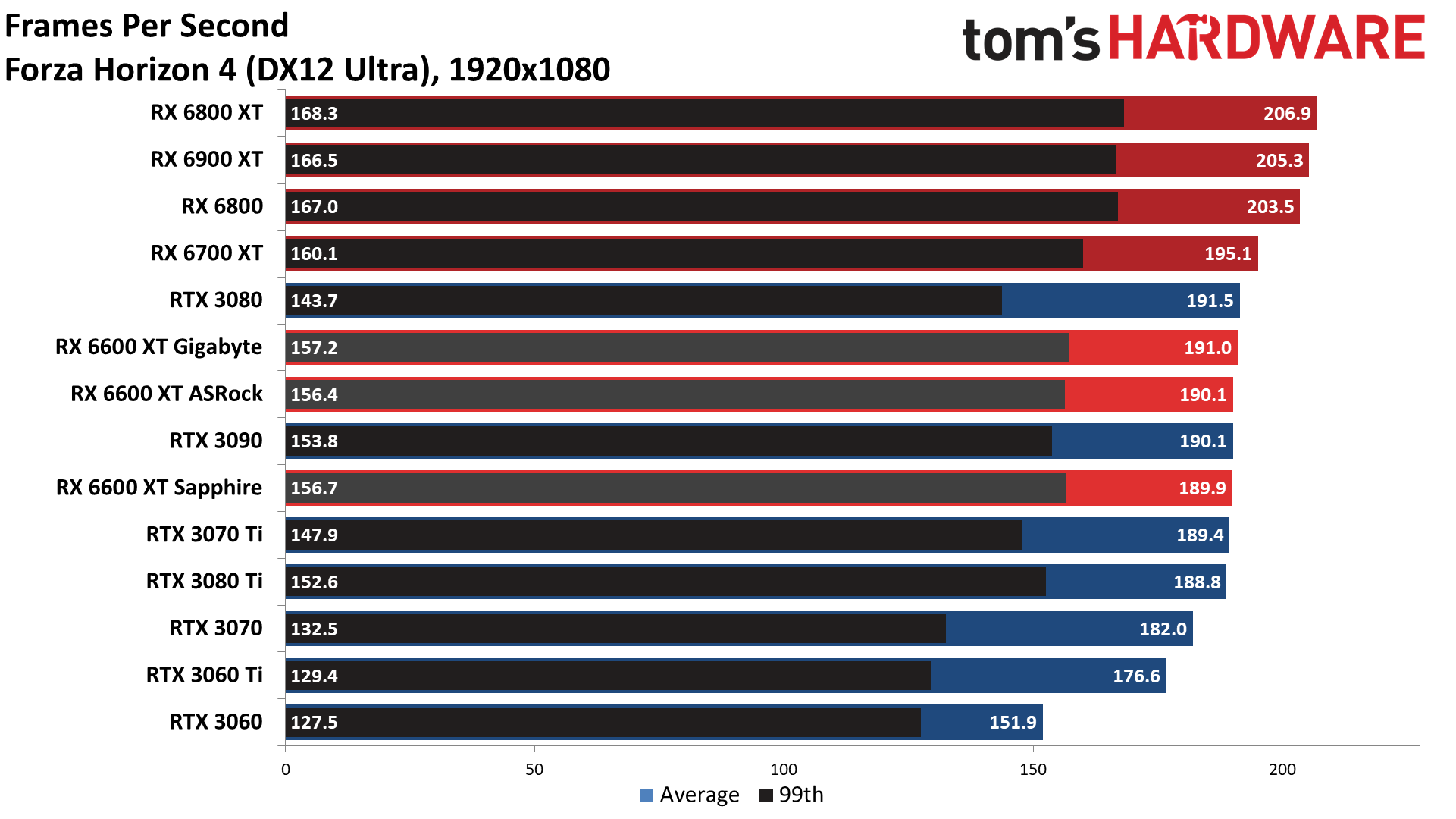
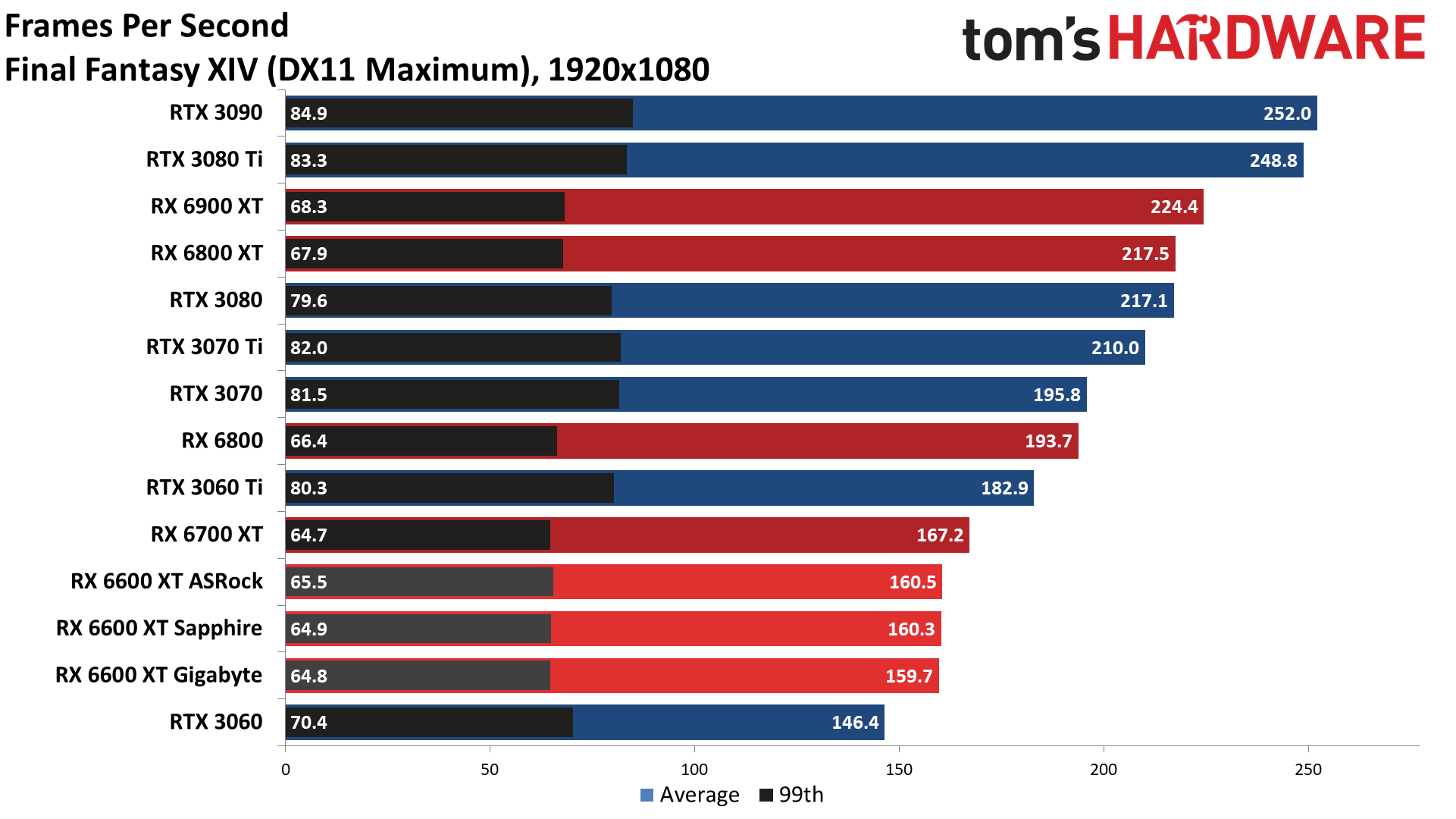

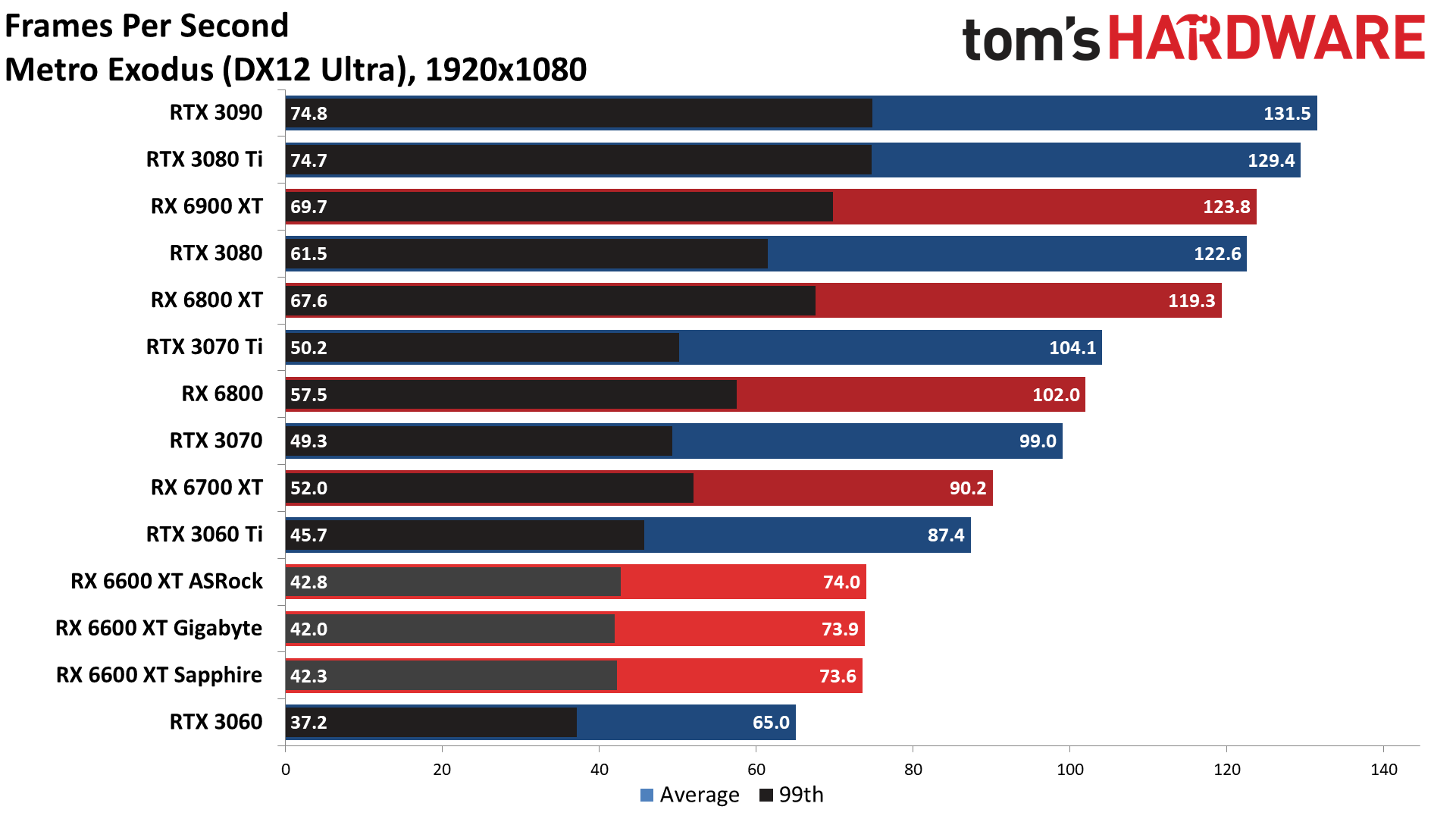
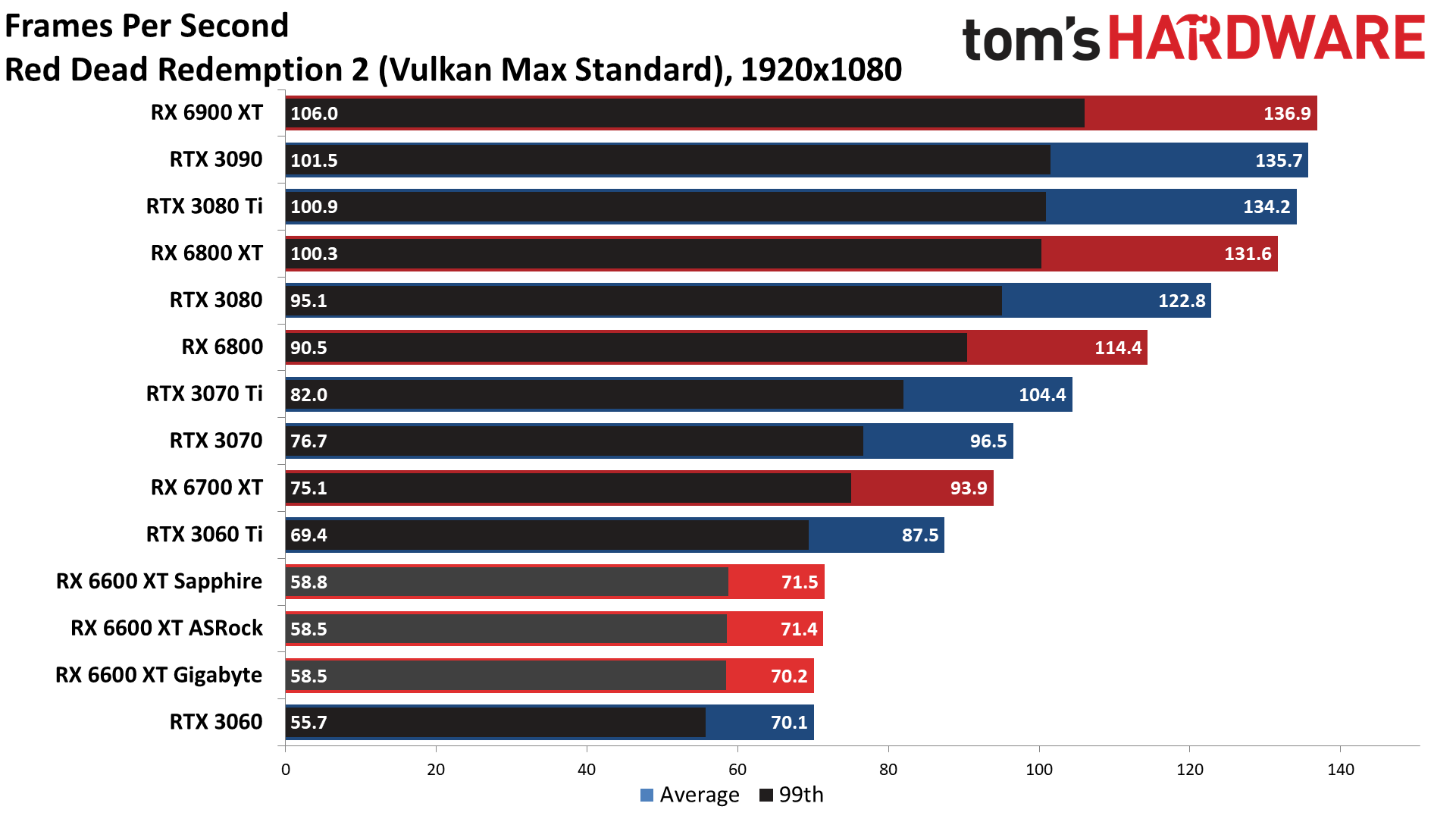
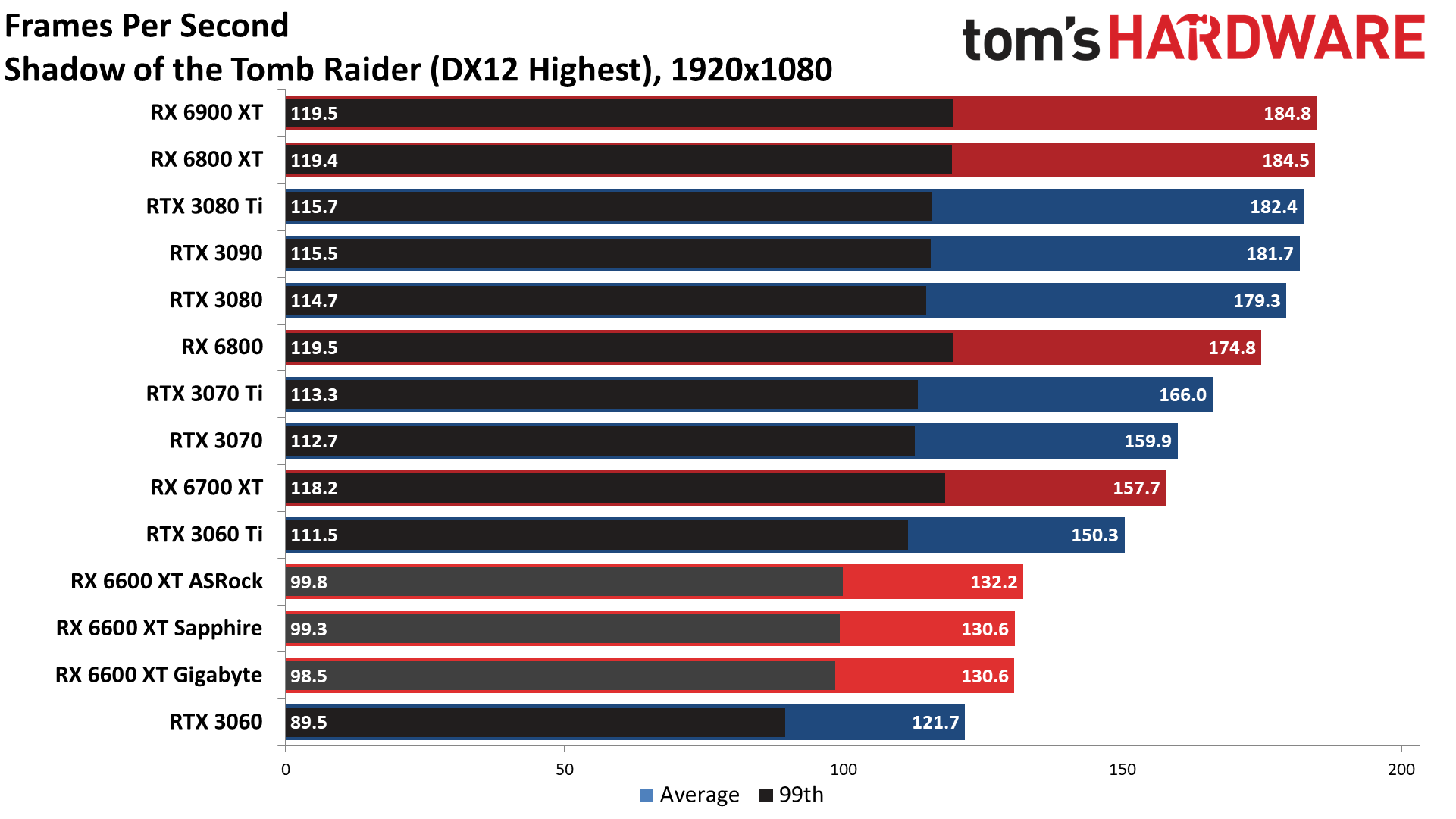
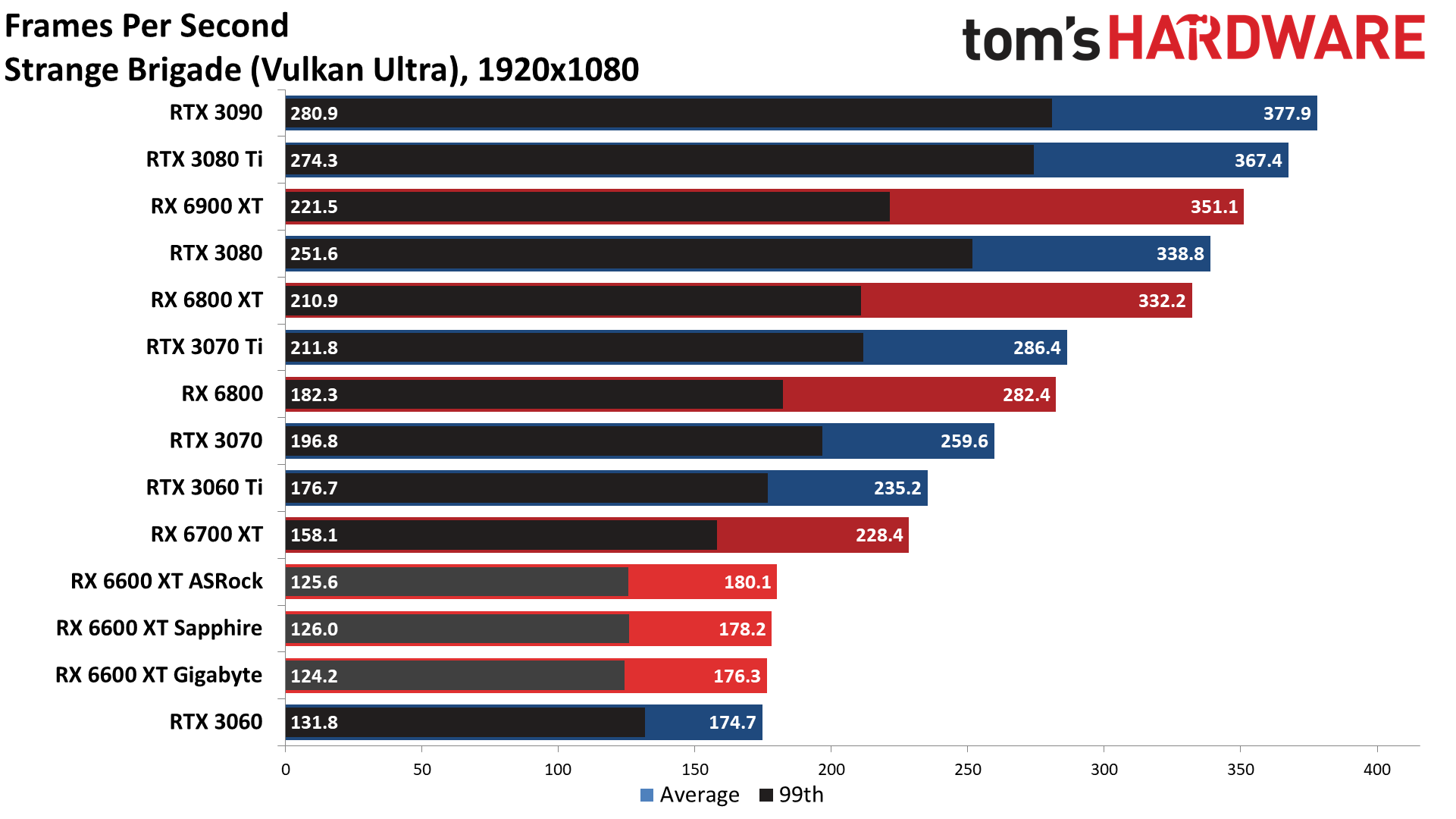
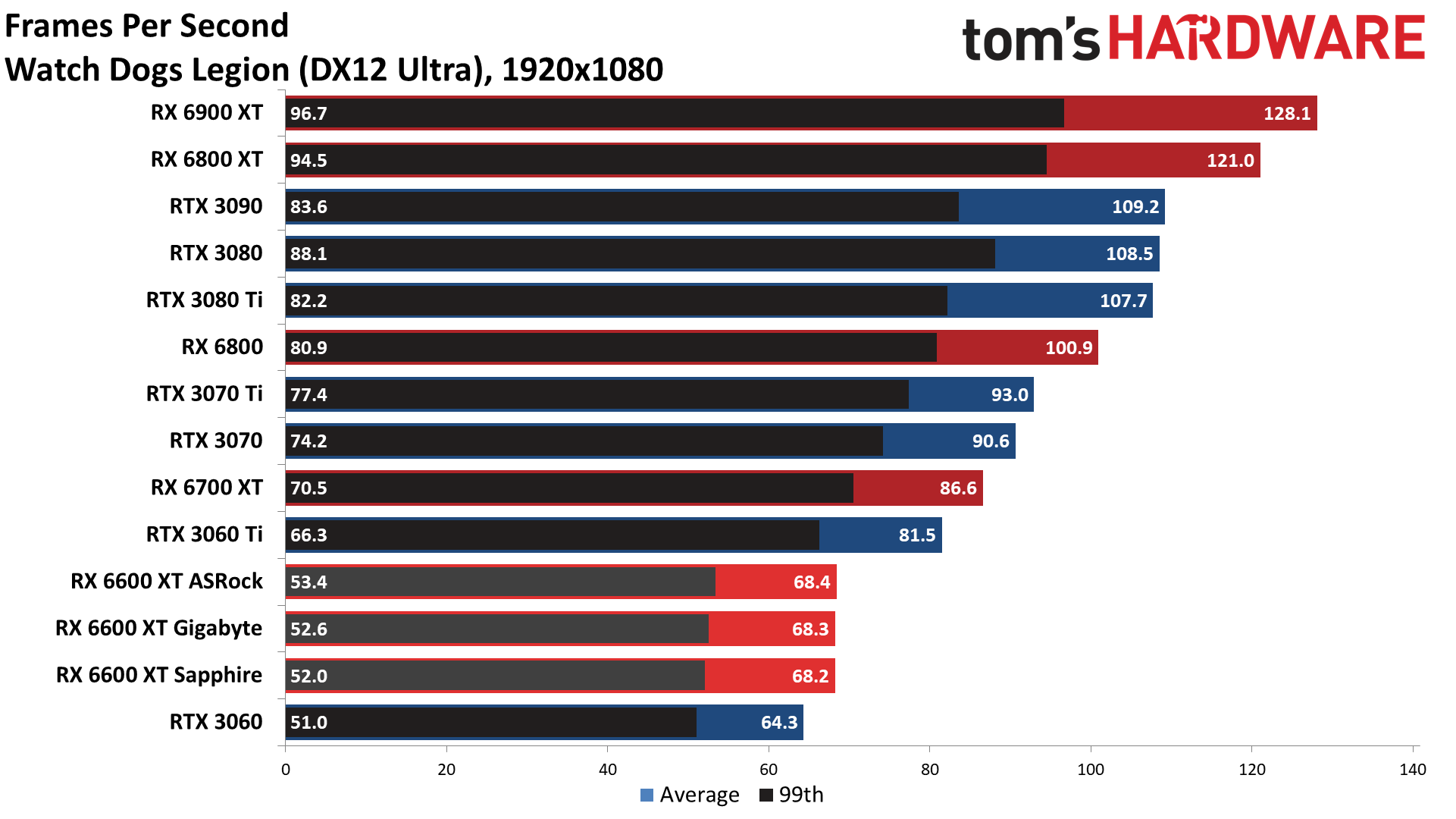
1440p Gaming Performance
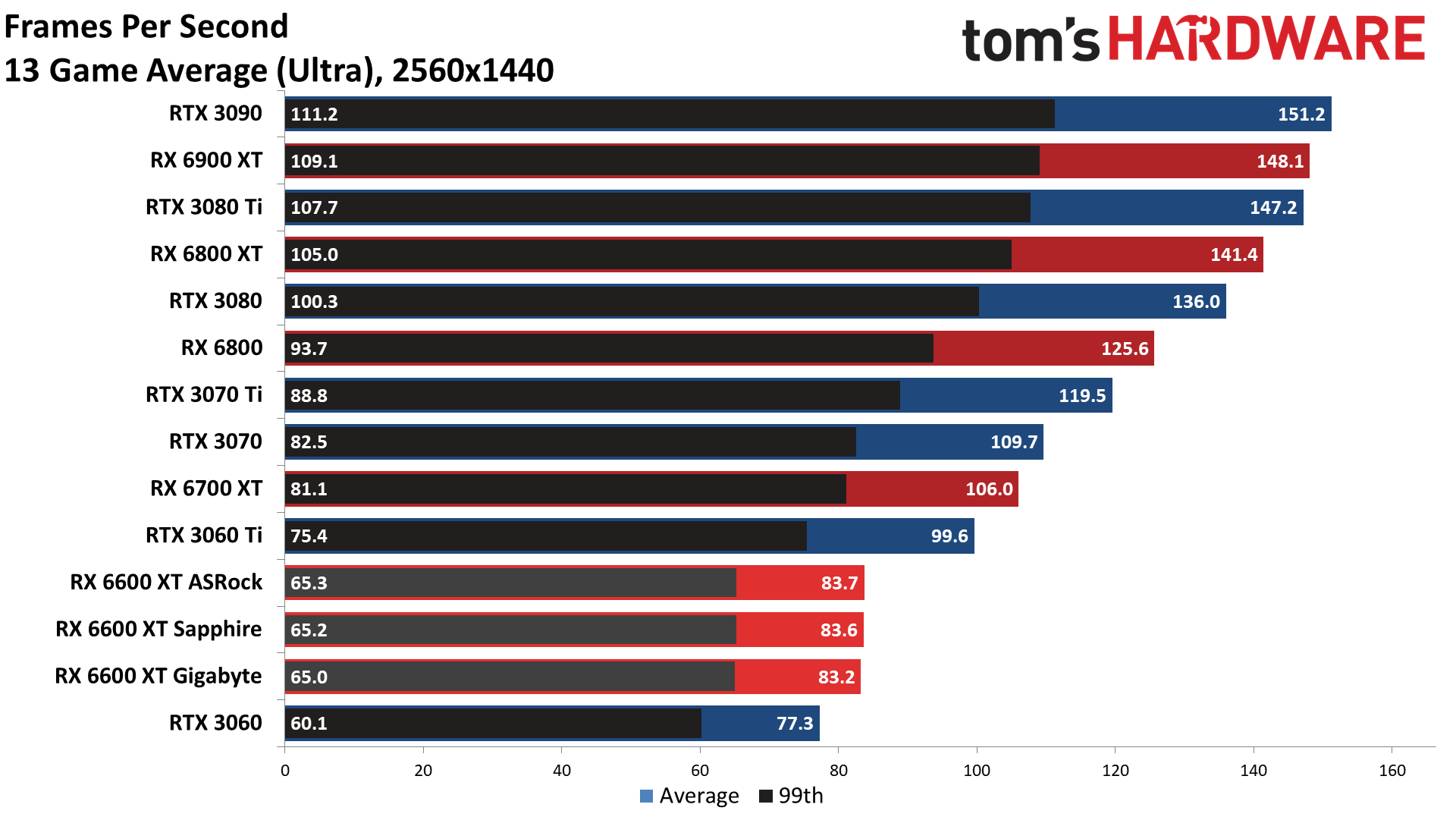
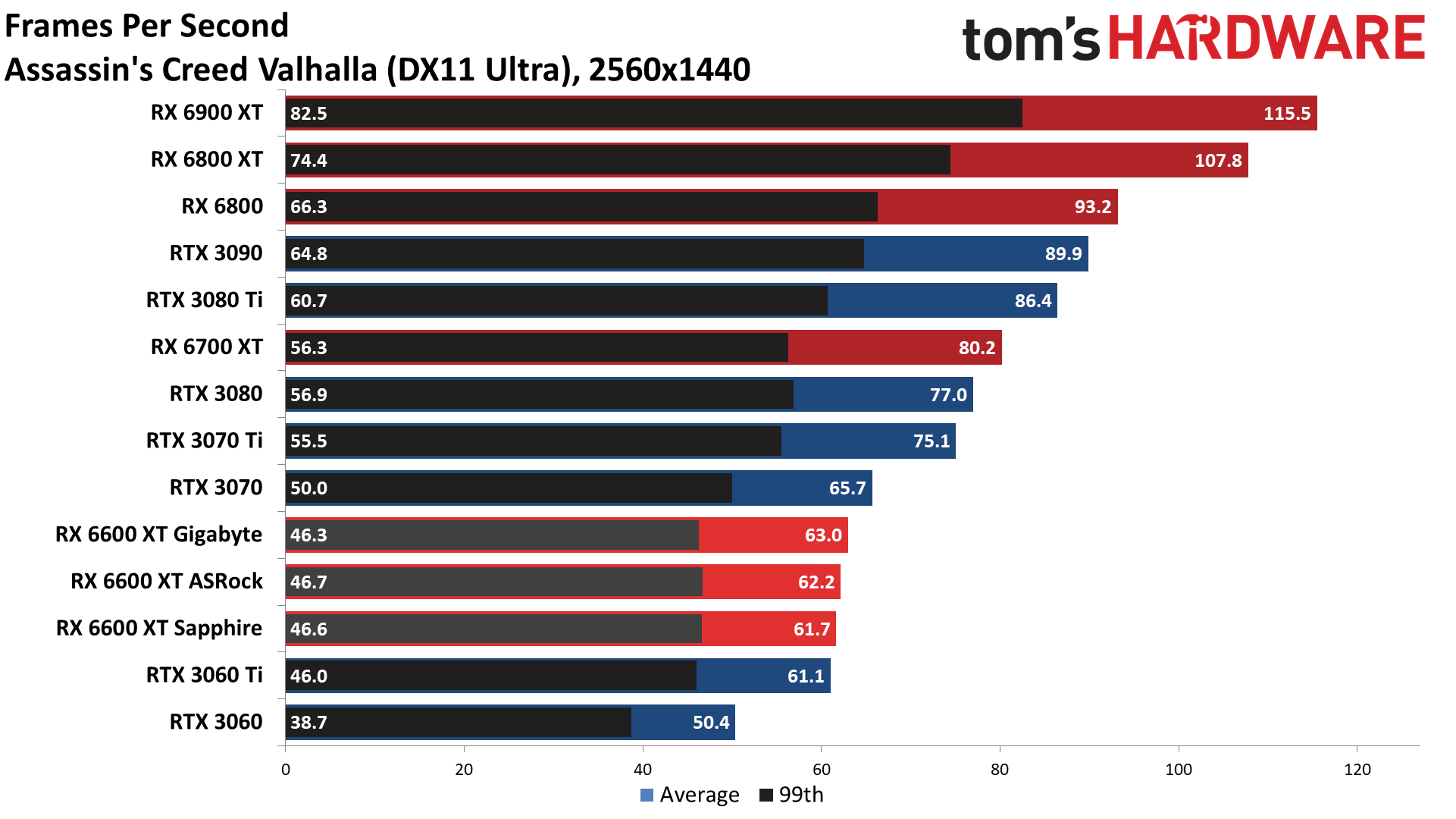
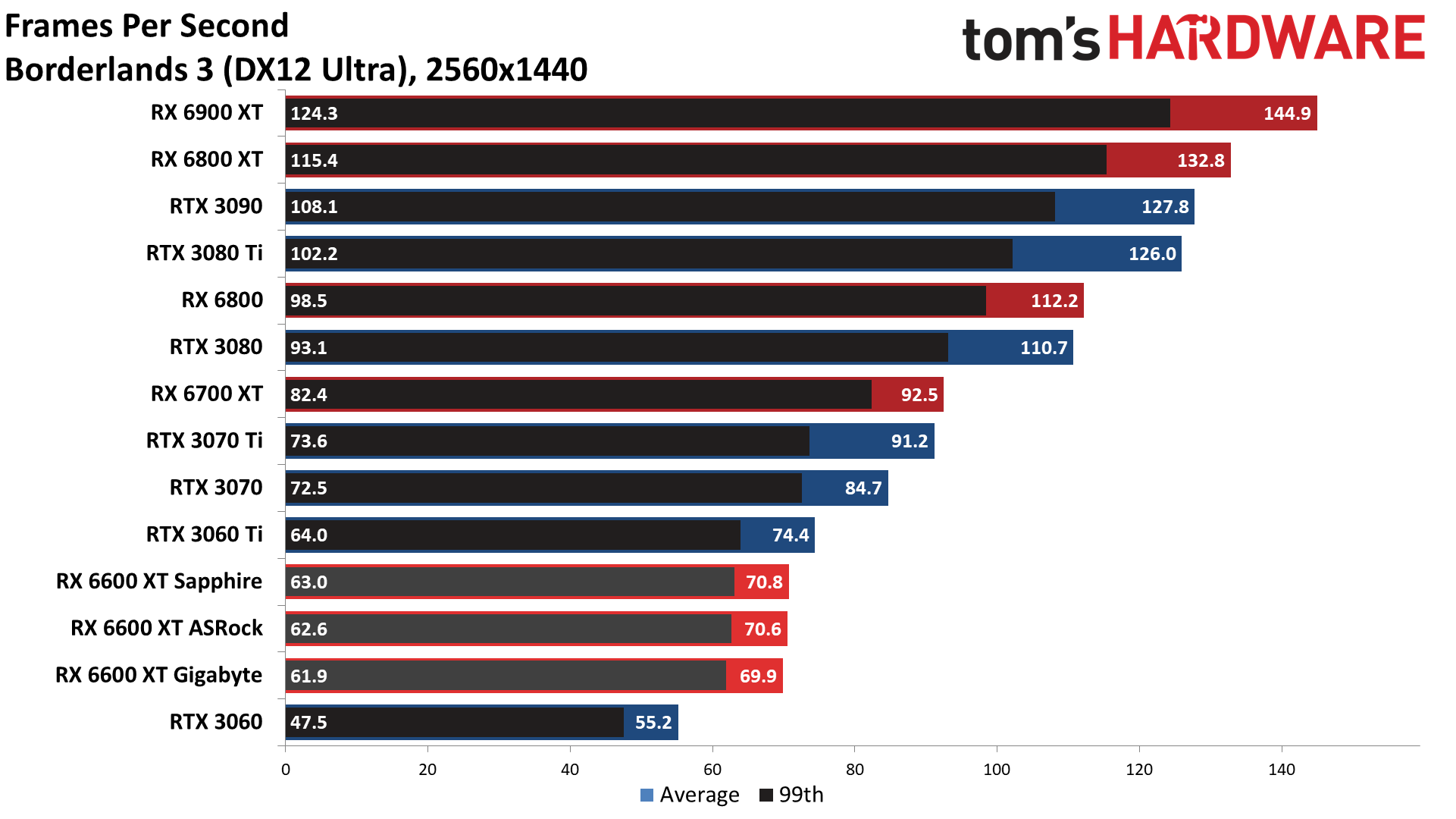
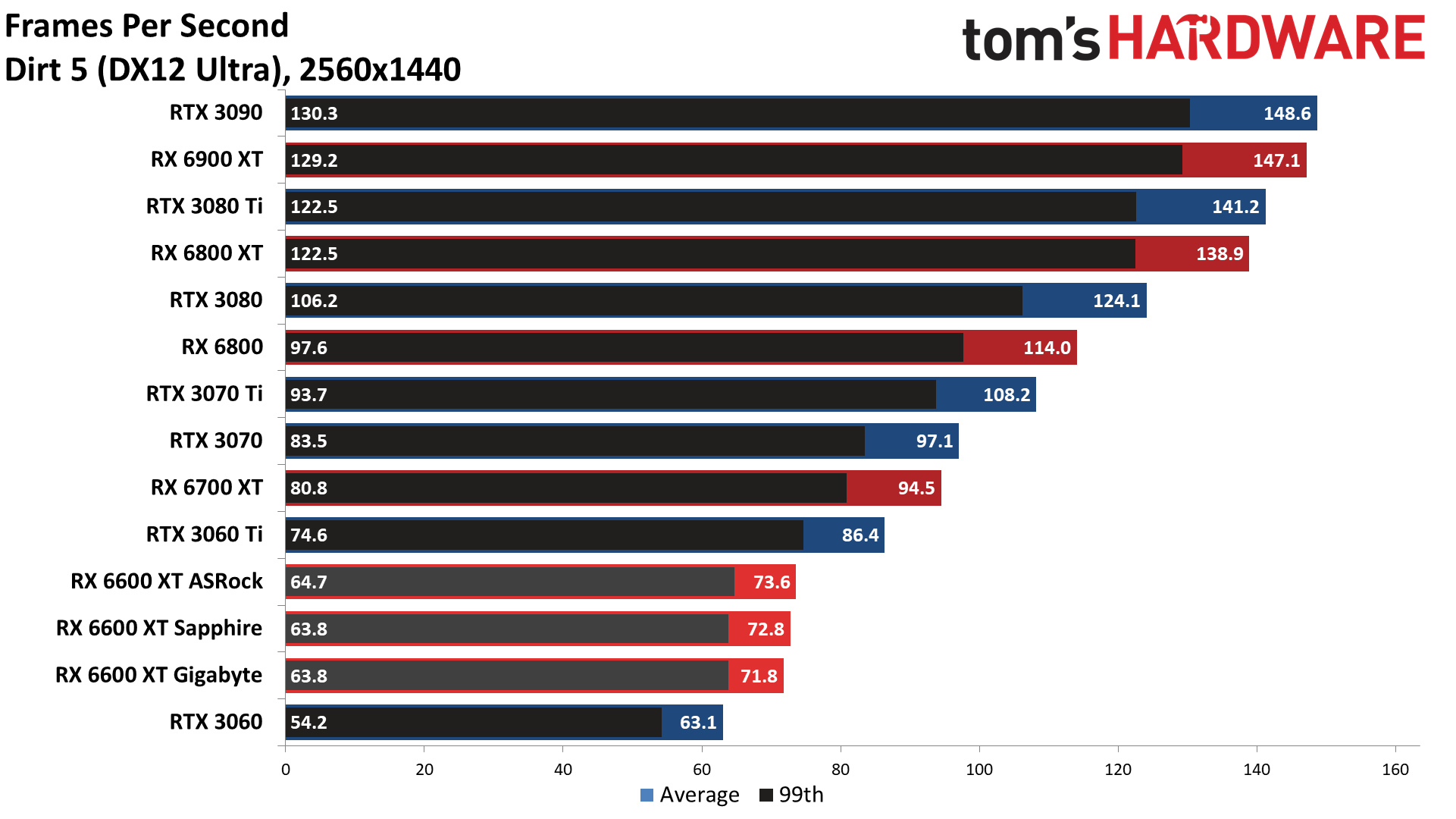


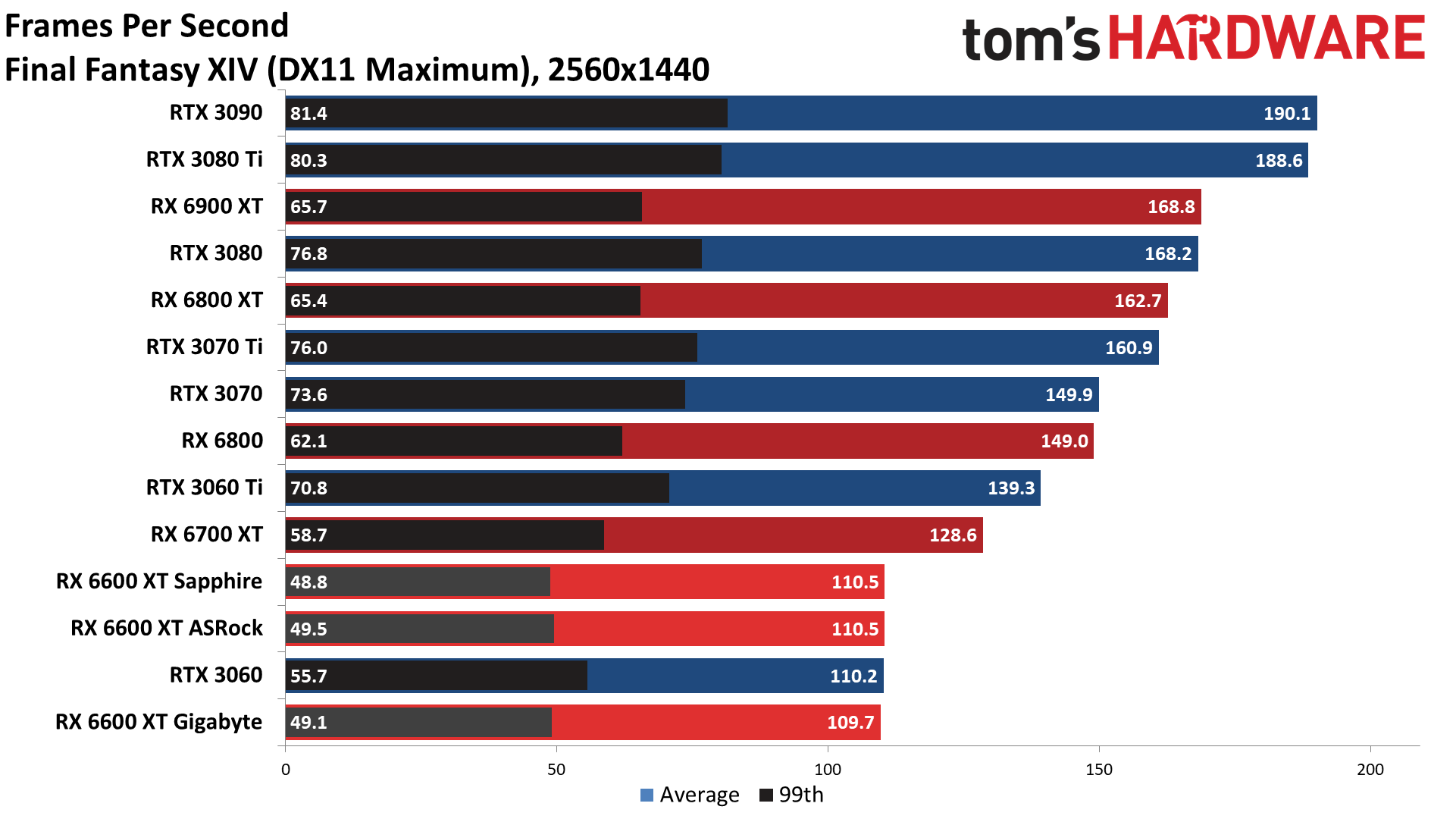
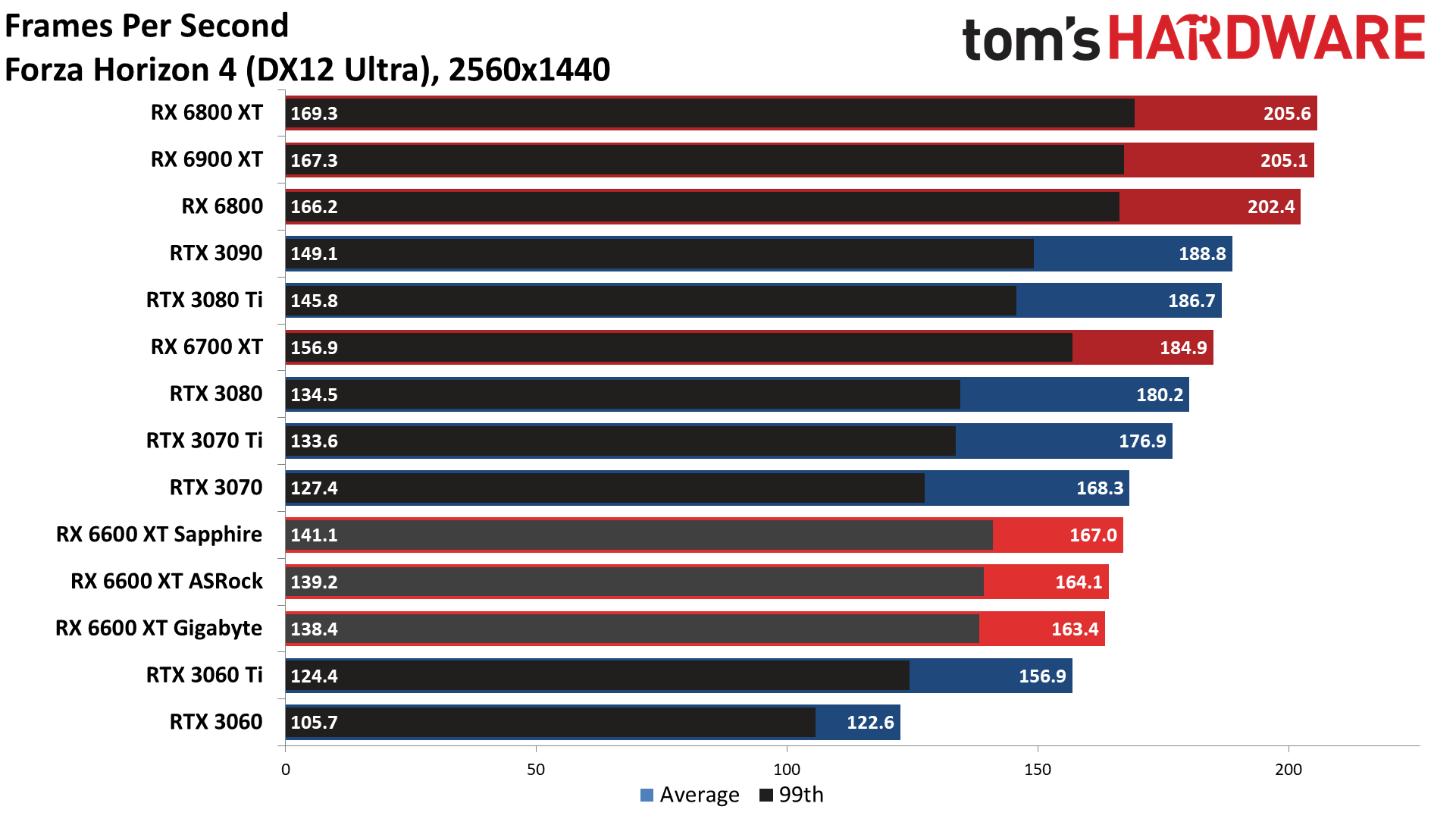
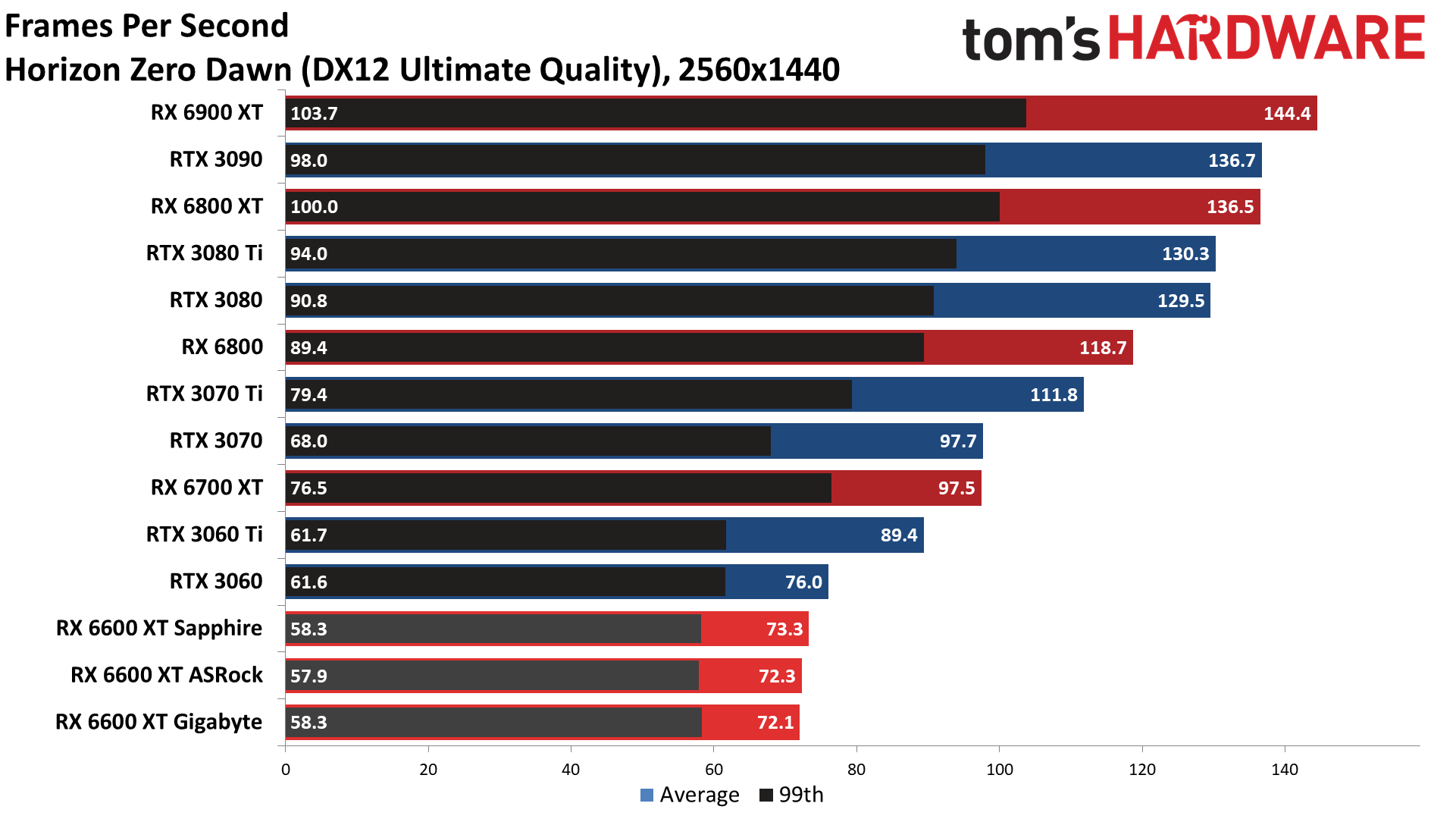
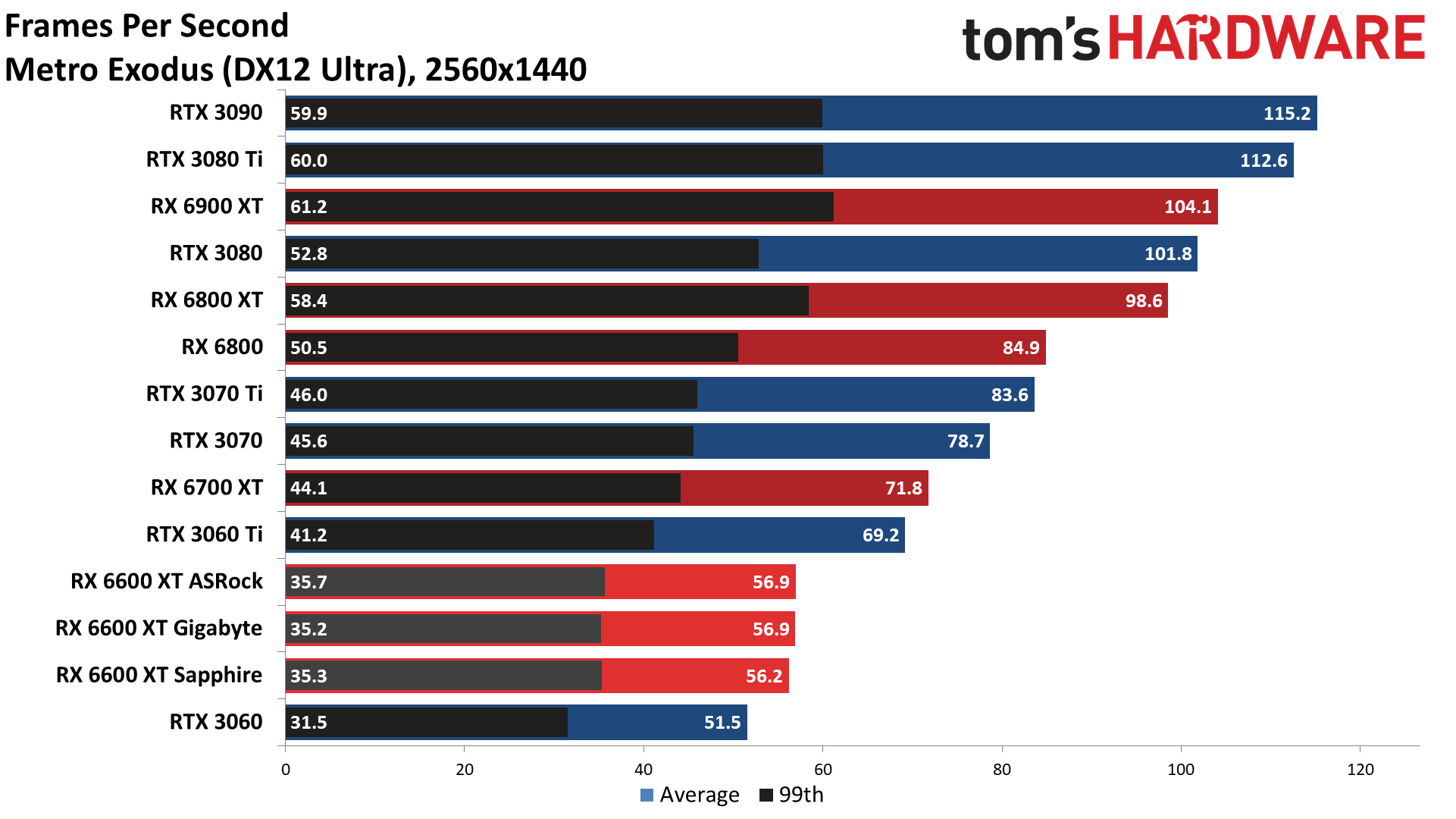
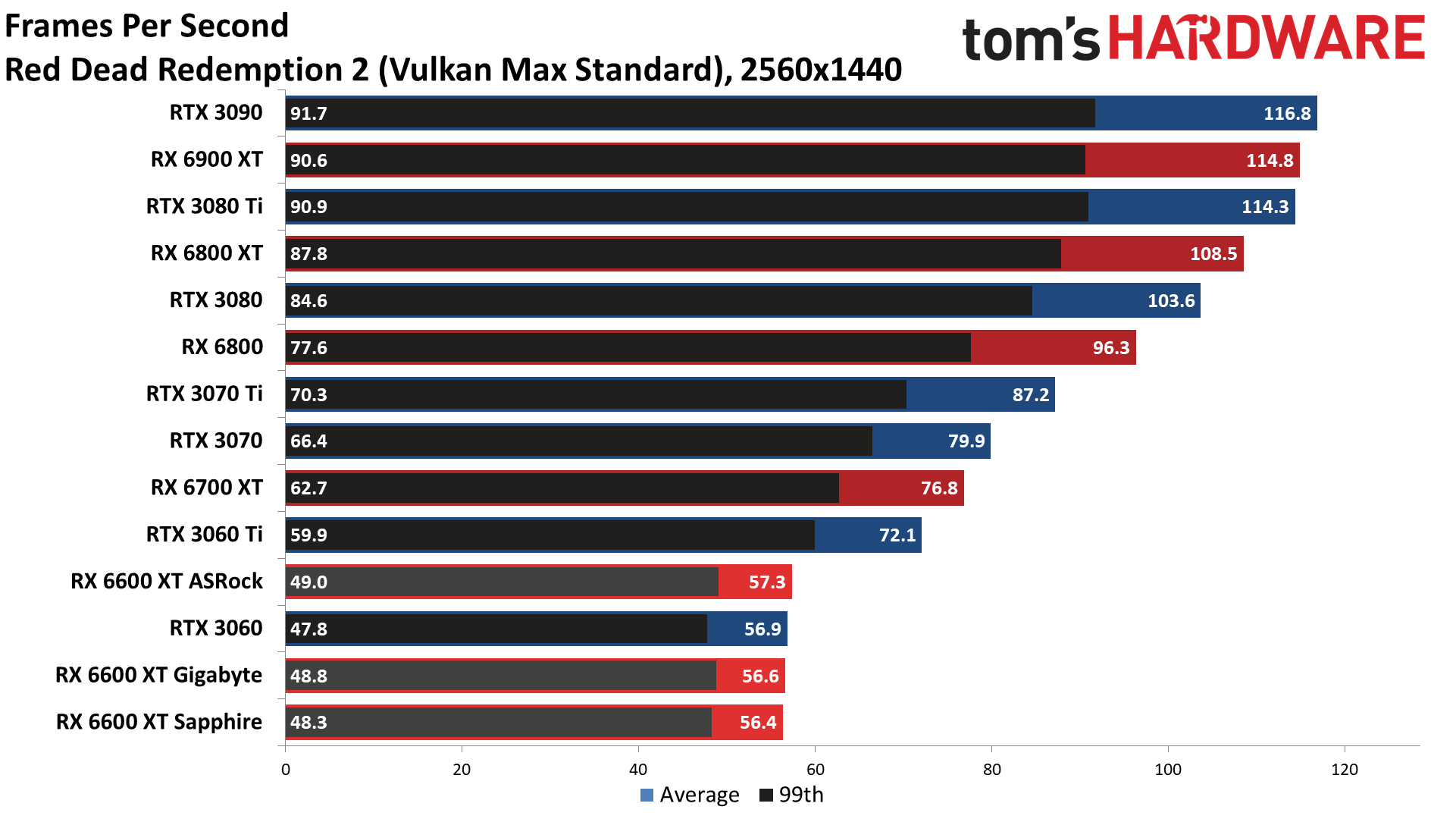
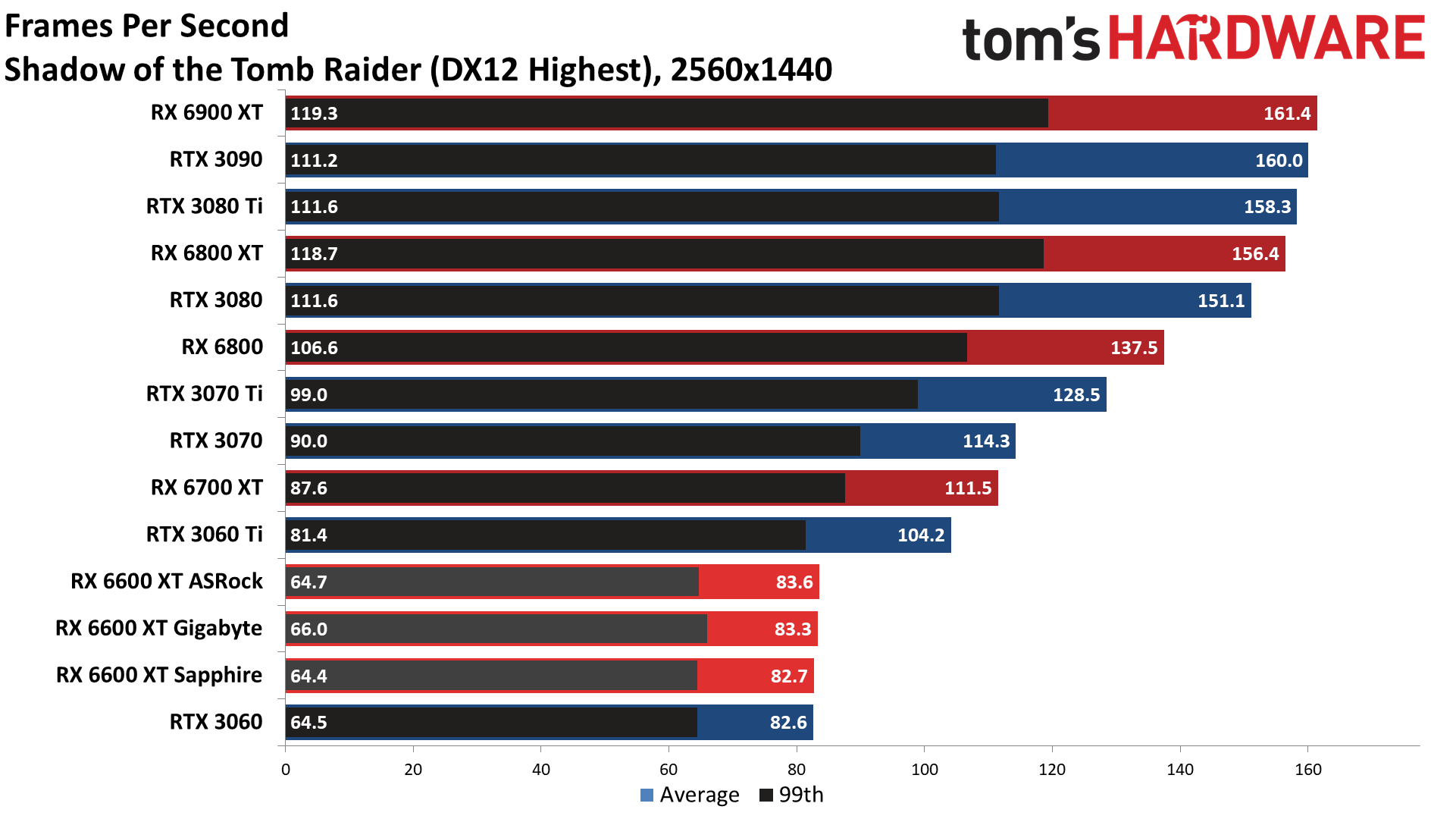
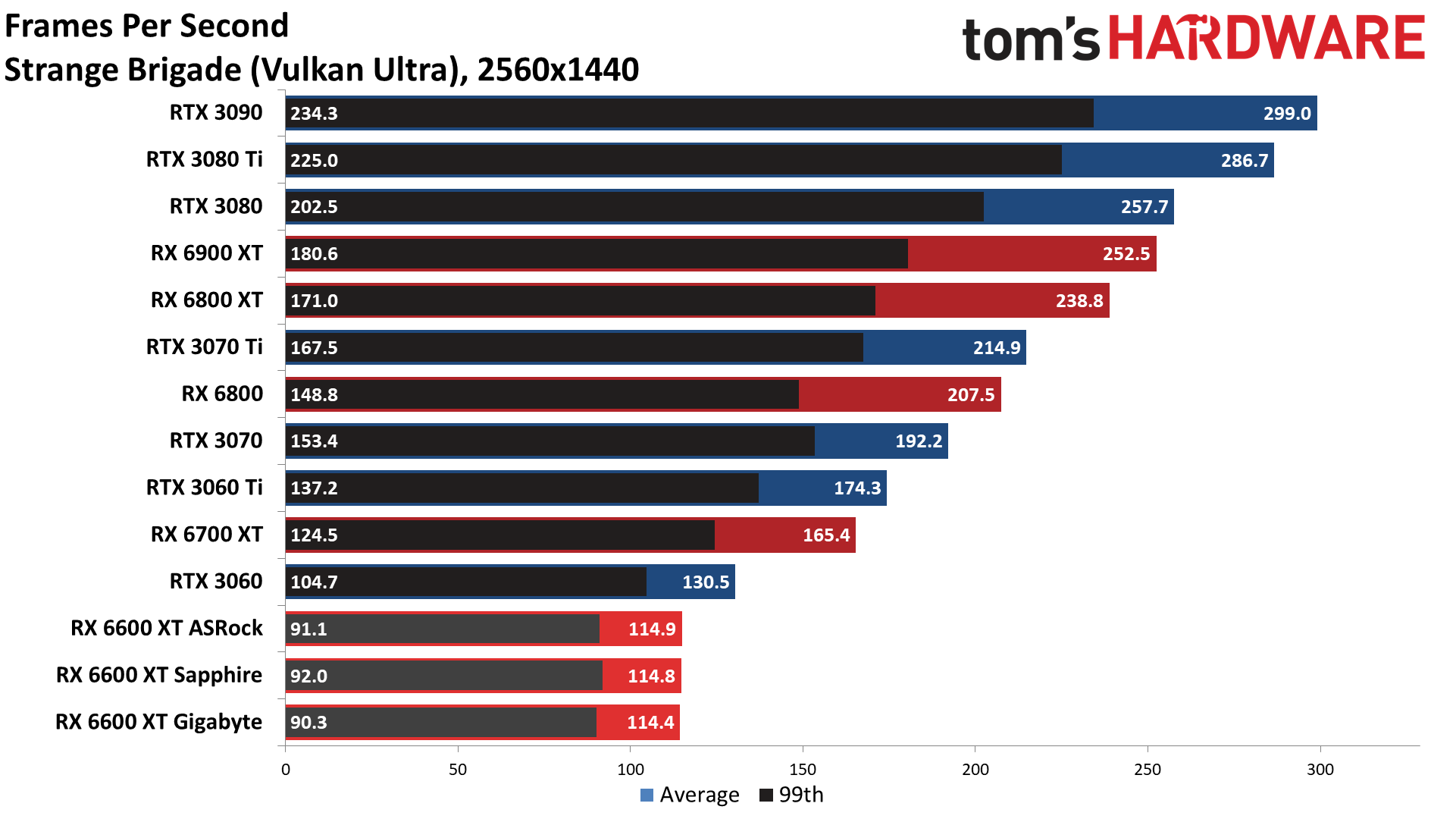
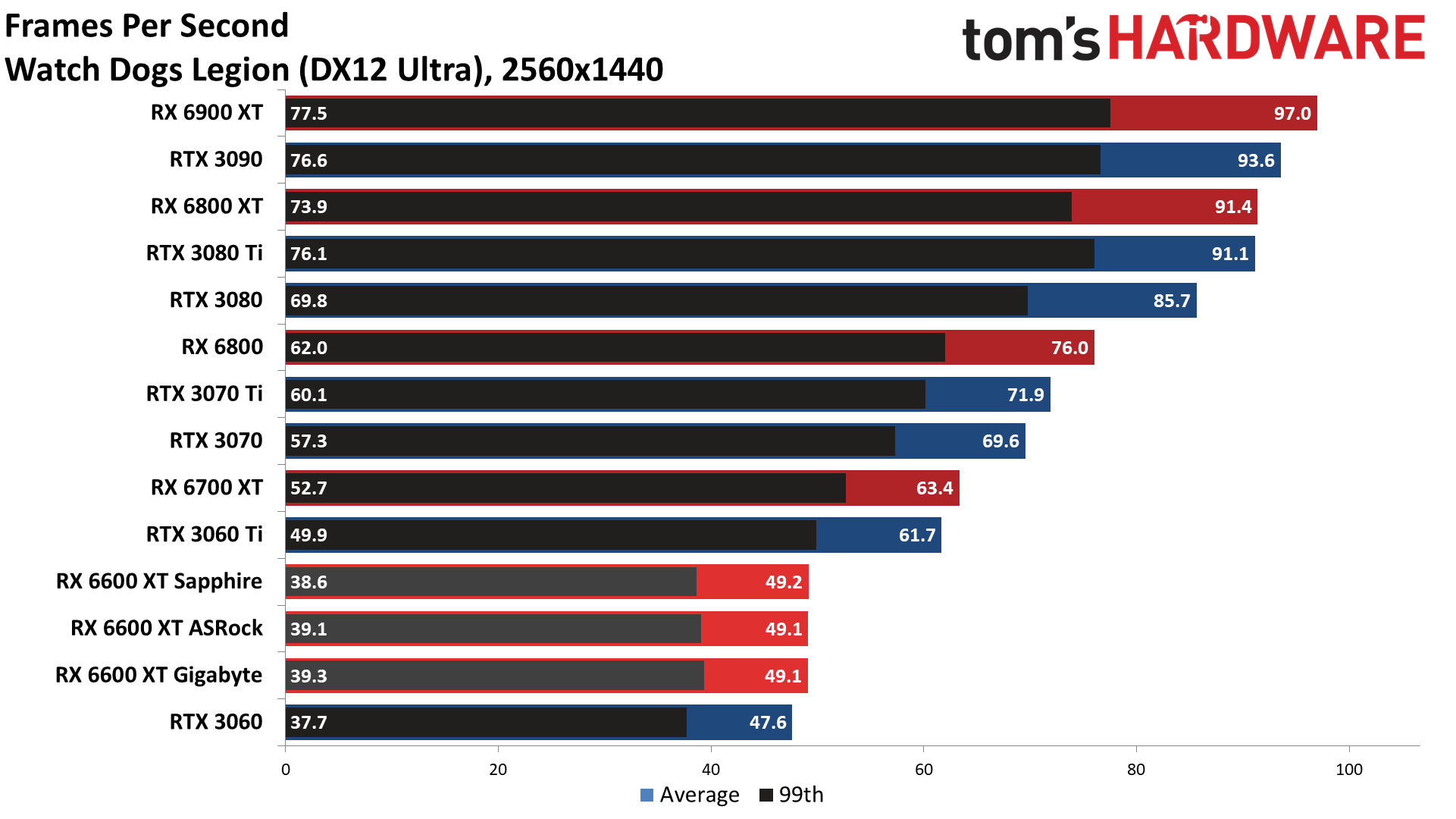
4K Gaming Performance

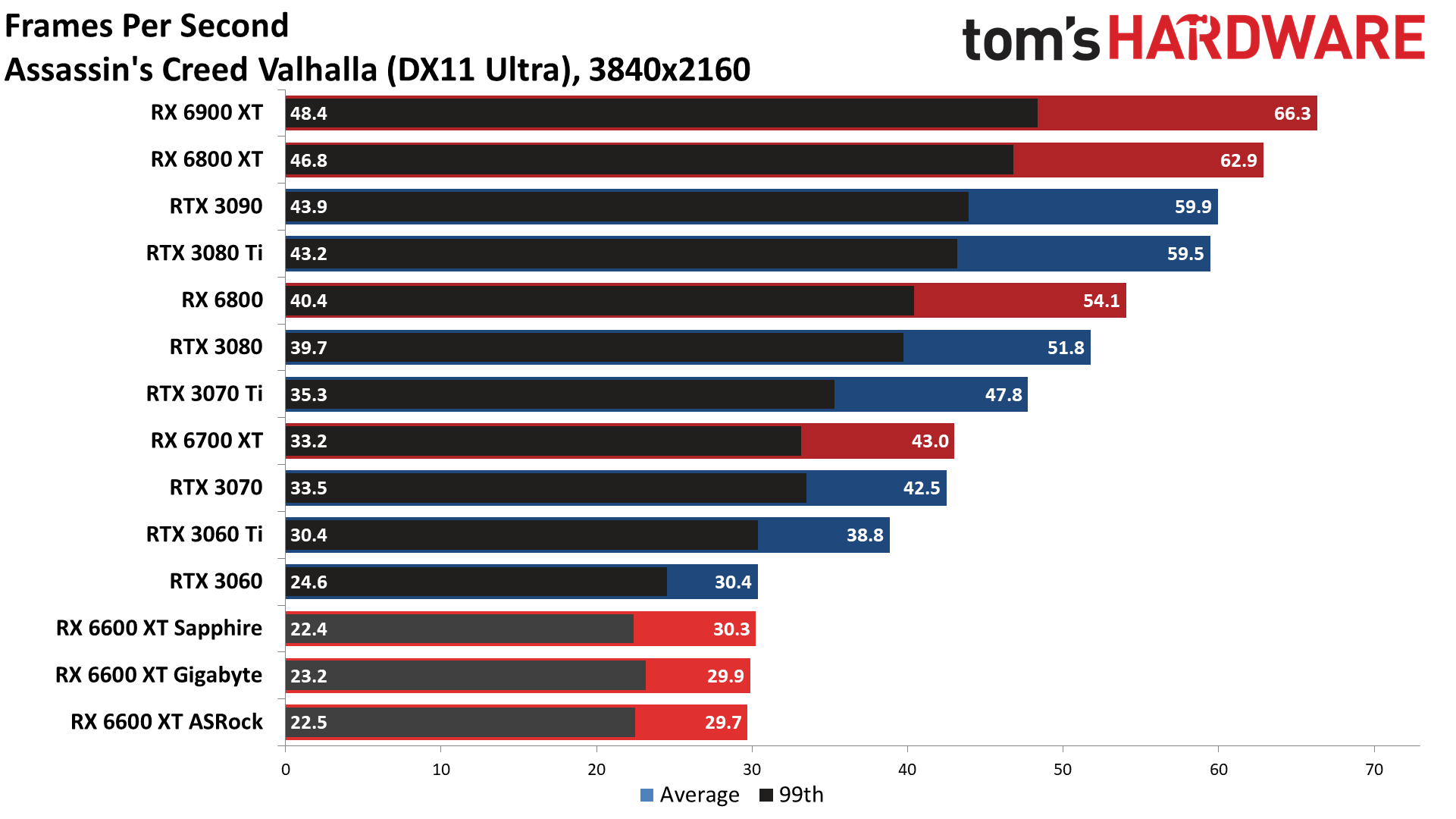

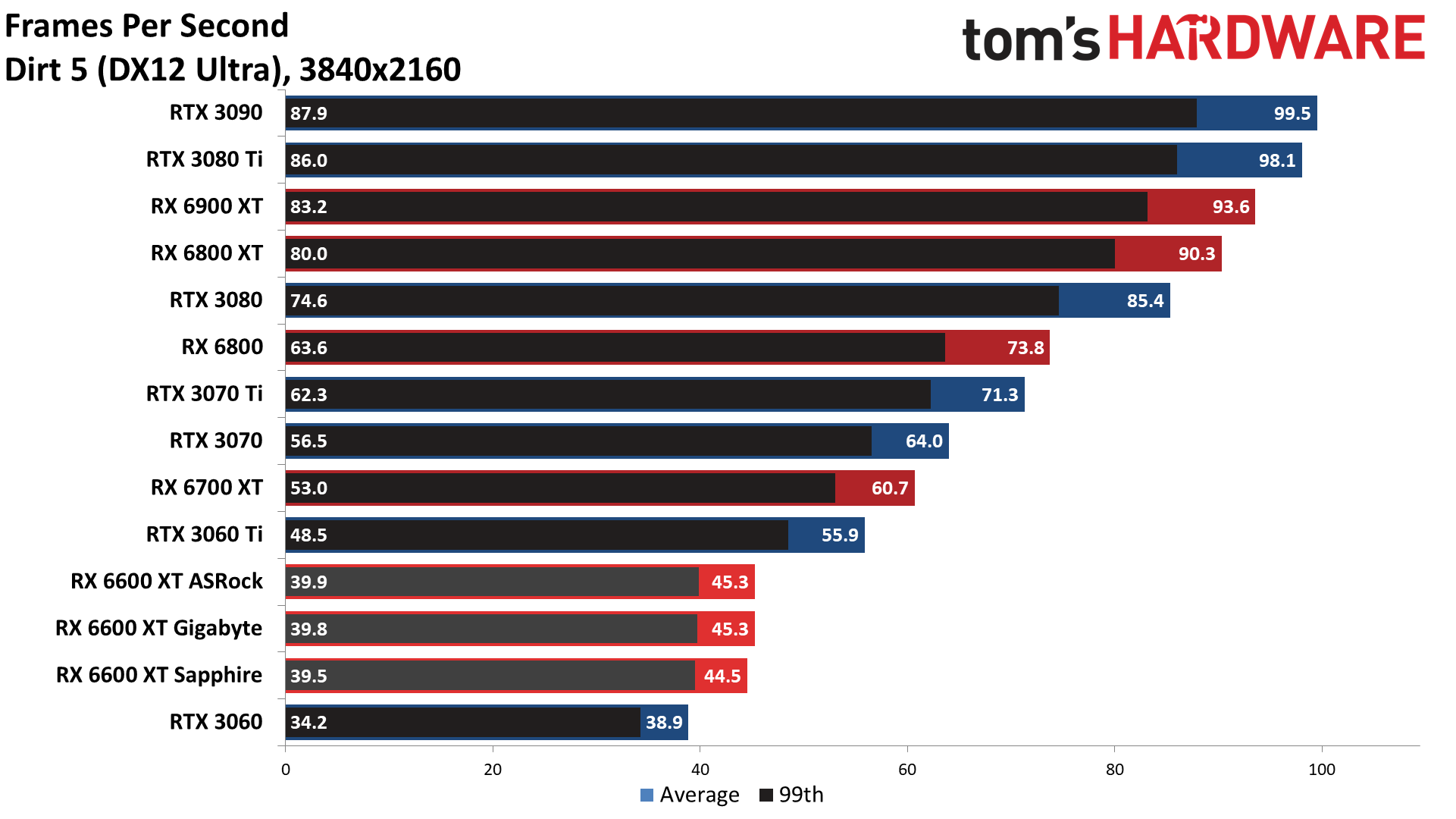

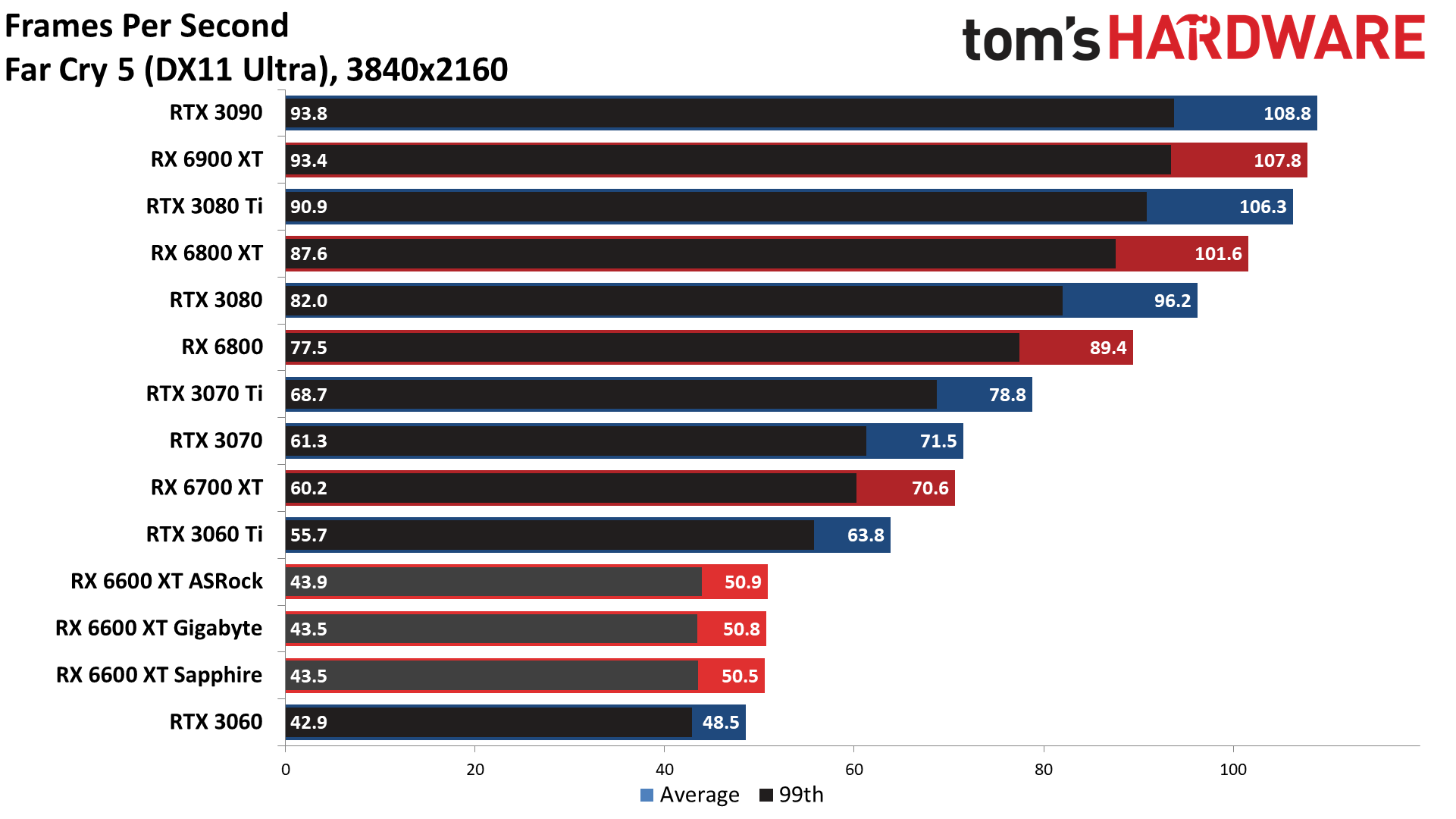


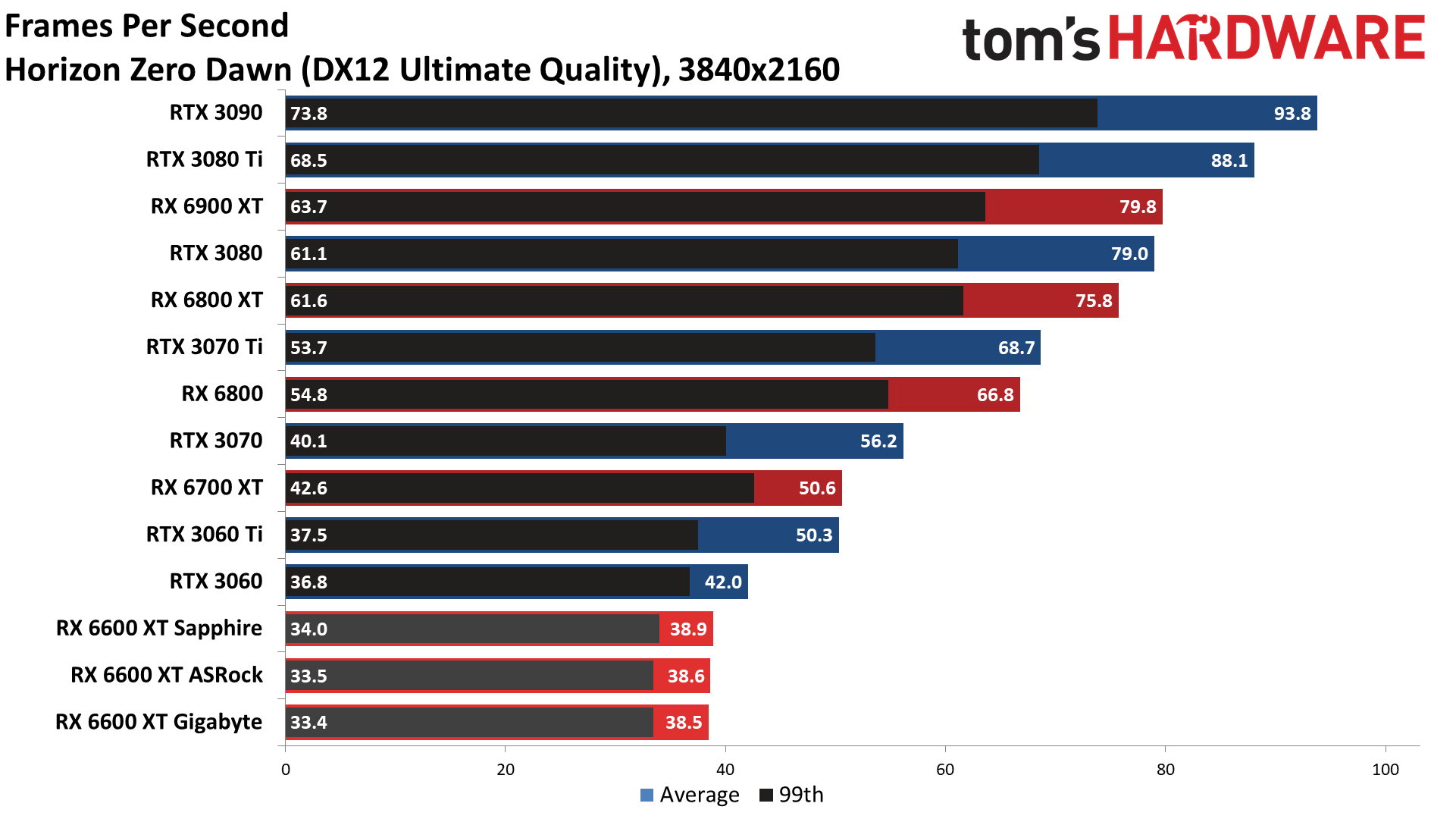
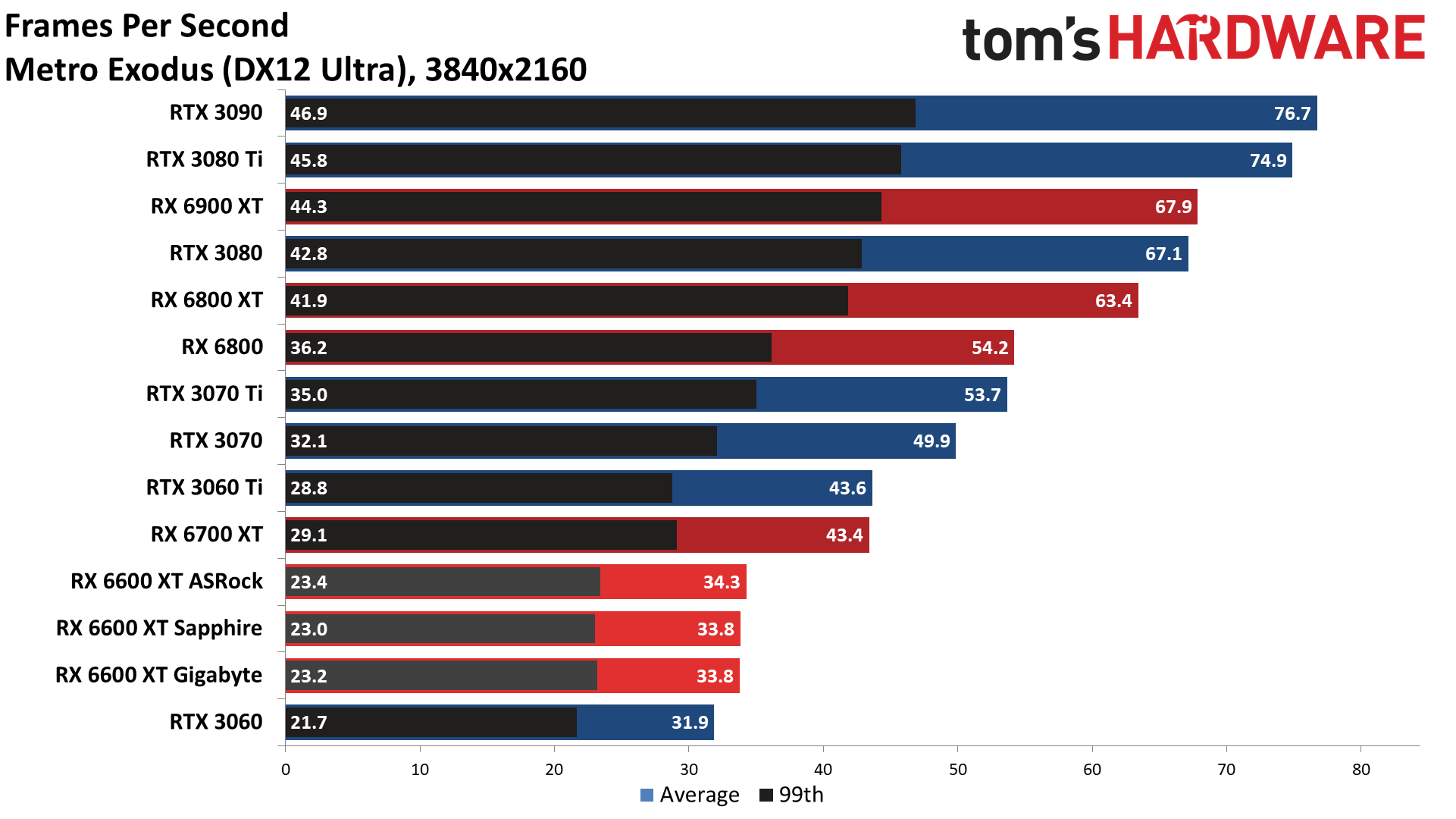
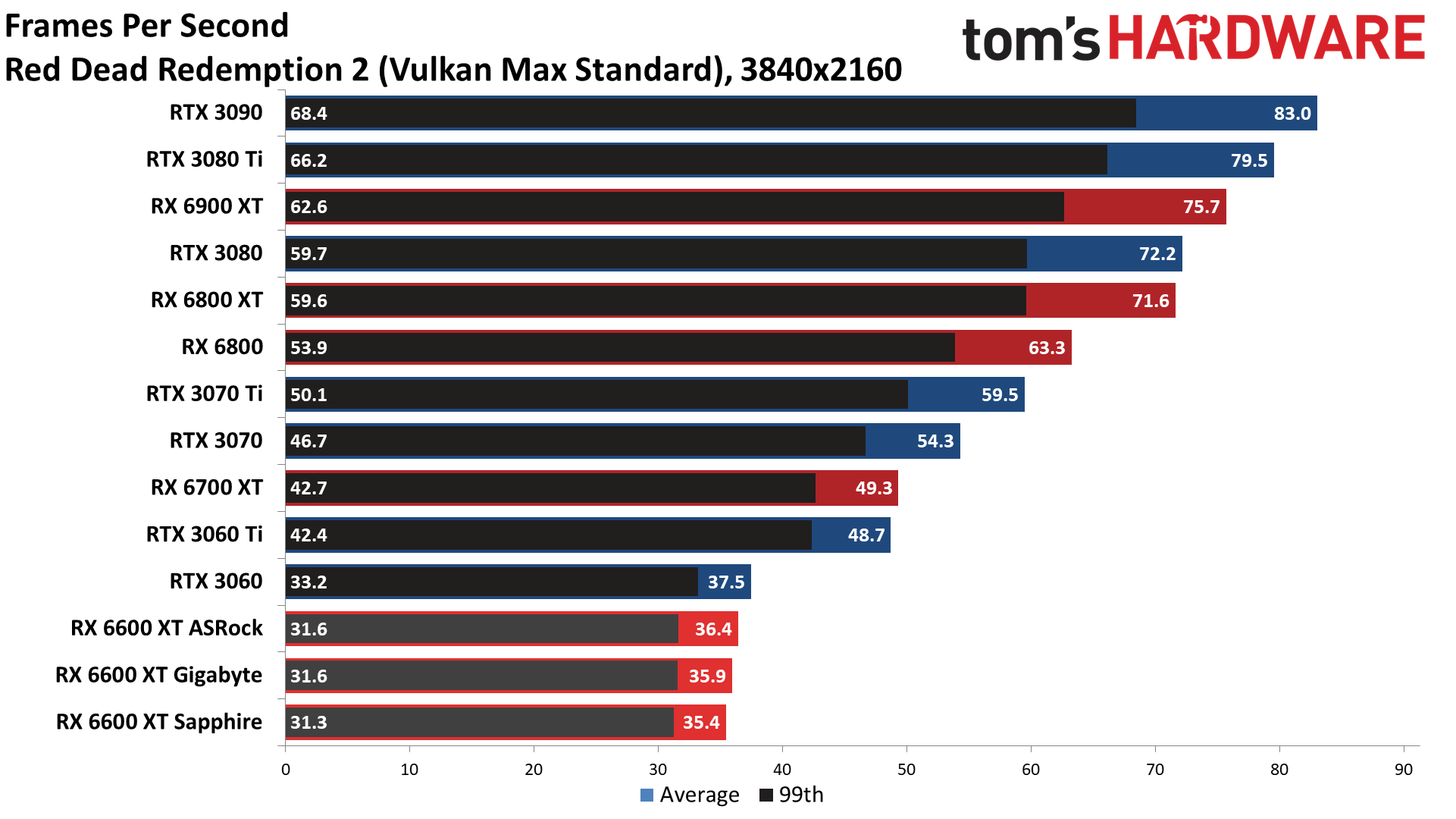

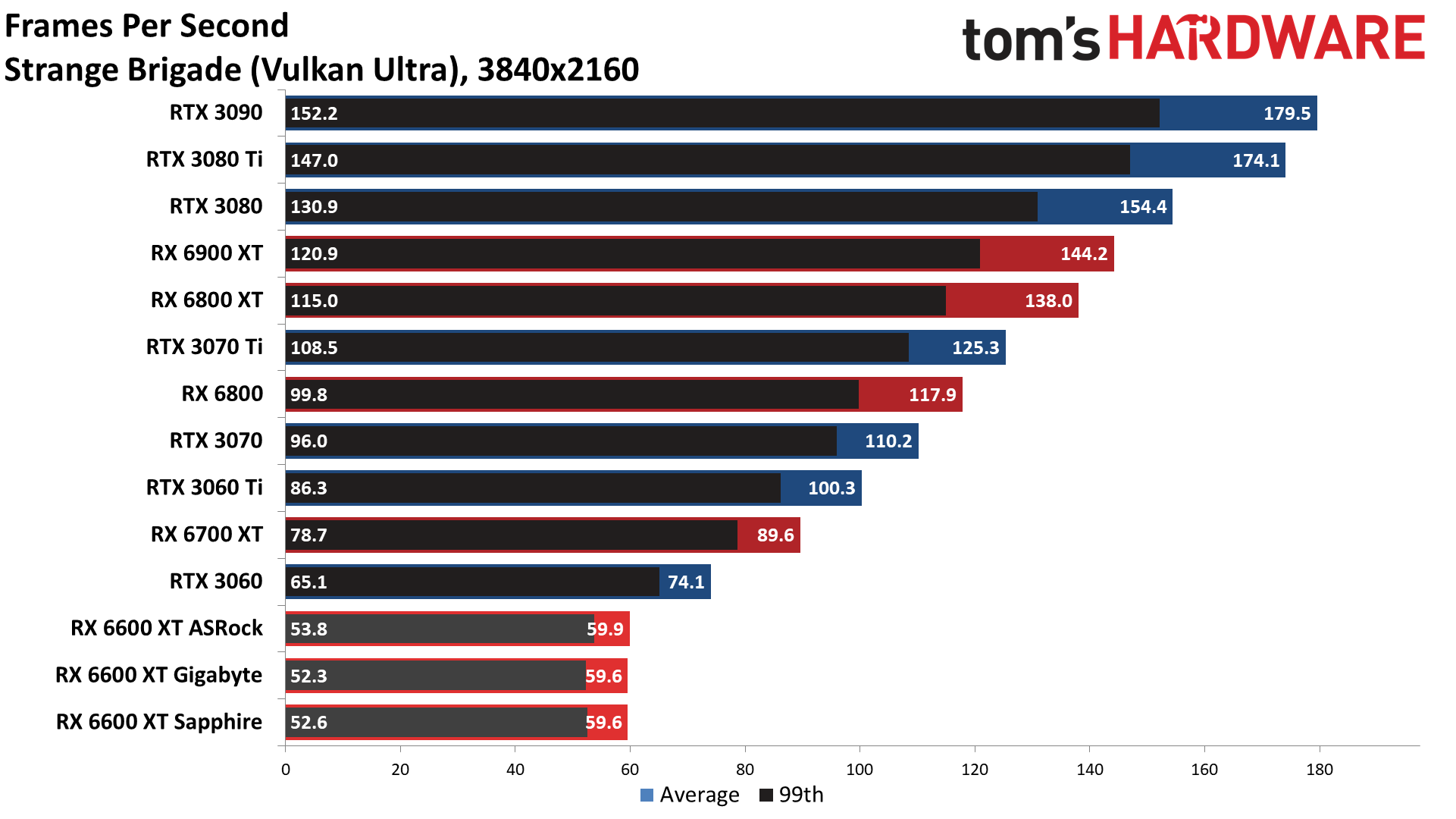

There's very little to discuss here. Technically, the Gigabyte Eagle came in as the slowest of the three RX 6600 XT cards, which makes sense considering it has the lowest boost clock. The individual test results do vary a bit between runs, though, and so it didn't place last in every single test of every single game. Similarly, the ASRock Phantom delivered the best performance overall, but the actual cumulative advantage over the other cards was miniscule — it was 0.3% faster than the Eagle at 1080p, 0.6% faster at 1440p, and 0.5% faster at 4K. The largest margin of victory was 3%, which definitely isn't something you'd notice in normal use.
When you consider that the ASRock card has 3% higher clocks and uses about 10% more power (that's on the next page), the tightly clustered results are even more telling. Eschewing bling and larger fans likely keeps power requirements a bit lower on the Gigabyte and Sapphire cards, and the RX 6600 XT runs cool enough that it really doesn't require a massive heatsink. In short, you're better off shopping for an RX 6600 XT card based on price, features (i.e., RGB lighting), and availability rather than worrying about how much faster one card might be compared to another.
Of course there's always overclocking, and better cooling might help eke out a few extra MHz and fps if you're pushing the GPU to its limit. We haven't done in-depth testing of overclocking on these GPUs, largely because it requires quite a bit of time for a relatively small payoff in terms of performance. Most GPUs can run about 5–10% faster than factory stock with a bit of effort, but that also means pushing up power use and fan speeds. We'd rather focus on the out-of-box experience instead of quibbling about final performance figures that are all still within 2% of each other.
Get Tom's Hardware's best news and in-depth reviews, straight to your inbox.
MORE: Best Graphics Cards
MORE: GPU Benchmarks and Hierarchy
MORE: All Graphics Content
Current page: Gaming Performance of Gigabyte Radeon RX 6600 XT Eagle
Prev Page Design and Features of Gigabyte Radeon RX 6600 XT Eagle Next Page Power, Temps, Fan Speed, and Noise of Gigabyte Radeon RX 6600 XT Eagle
Jarred Walton is a senior editor at Tom's Hardware focusing on everything GPU. He has been working as a tech journalist since 2004, writing for AnandTech, Maximum PC, and PC Gamer. From the first S3 Virge '3D decelerators' to today's GPUs, Jarred keeps up with all the latest graphics trends and is the one to ask about game performance.
-
watzupken I am glad at least it doesn't explode. In any case, I feel the cutback is to be expected given that the Eagle series is Gigabyte's entry level model.Reply -
artk2219 Replywatzupken said:I am glad at least it doesn't explode. In any case, I feel the cutback is to be expected given that the Eagle series is Gigabyte's entry level model.
I agree some compromises are expected with entry level models, but the crazy thing is they didn't have to. I can't see the build cost on that longer triple fan model being any cheaper than some of the shorter dual fans models that are available. Eh who knows maybe they had a bunch of those fans, or could source them super cheaply, still doesn't explain the long heatsink or extra plastic etc on the card. -
Sleepy_Hollowed Something about JD and Turk screaming “Eagle”.Reply
in all seriousness, wow, this is truly budget in every sense of the word, it could be worse, but wow.
reminds me of my first blower card, GTX 660, and how loud and hot it ran (this was an oem design on an Alienware system). -
Findecanor Reply
Every large computer brand produces faulty hardware or software sooner or later.watzupken said:I am glad at least it doesn't explode.
The difference, which matters is in how they treat the issue — and the customers affected by it.
This was Gigabyte's biggest failure with the PSU. -
watzupken Reply
This I totally agree. I am not upset with failing products from Gigabyte. I am upset with the way they handle the issue. And considering this may be a potential fire hazard, or may end up killing something in the computer (where warranty gets void), it is highly irresponsible of Gigabyte to delay a recall and try to blame it on reviewers. Worst of all, they are bundling these PSU with GPUs despite knowing almost a year back of the issue. This just shows they don't care. Anyway, no more Gigabyte products for me after 2 decades of supporting them by buying their motherboards.Findecanor said:Every large computer brand produces faulty hardware or software sooner or later.
The difference, which matters is in how they treat the issue — and the customers affected by it.
This was Gigabyte's biggest failure with the PSU.
Back to the topic of this GPU.